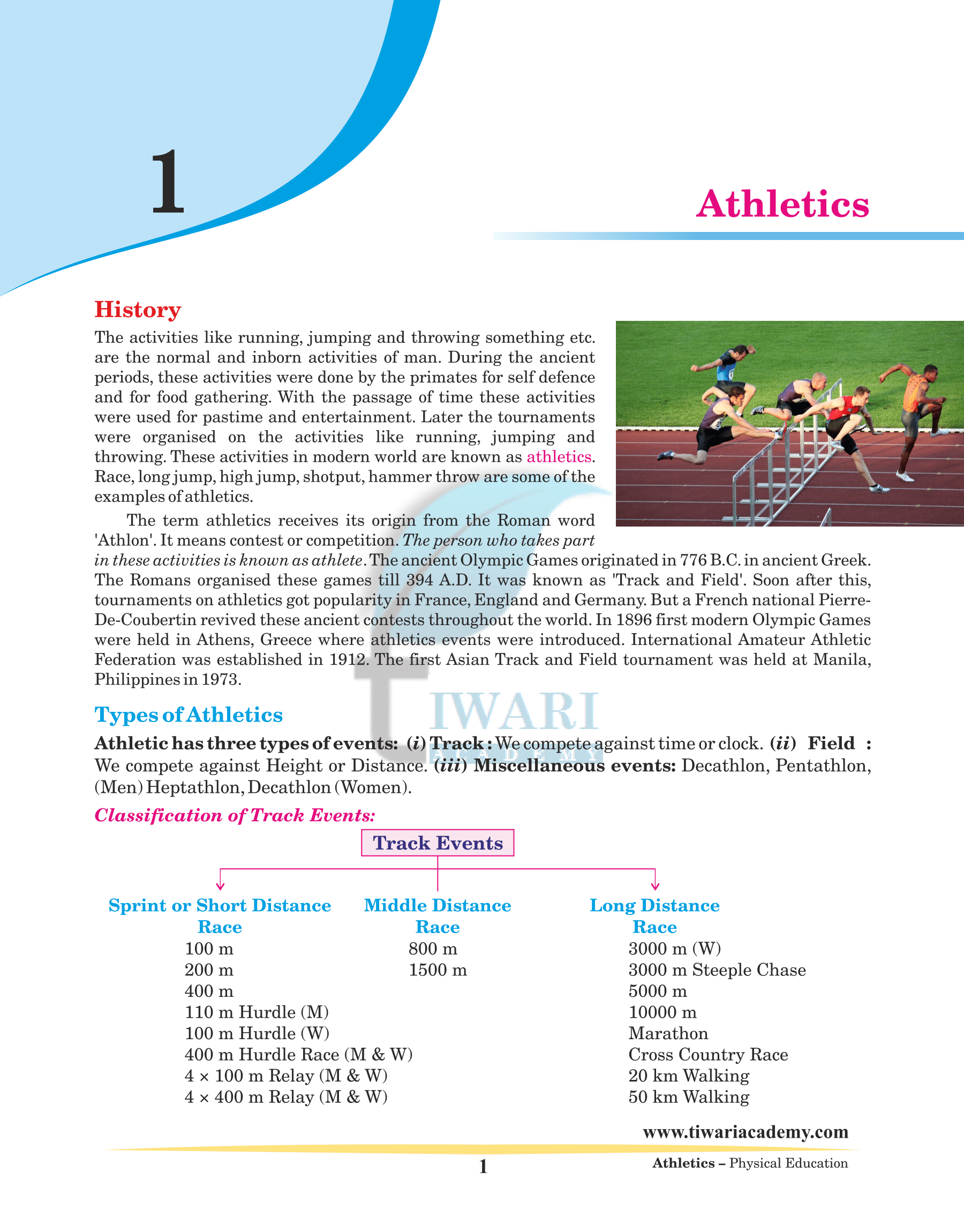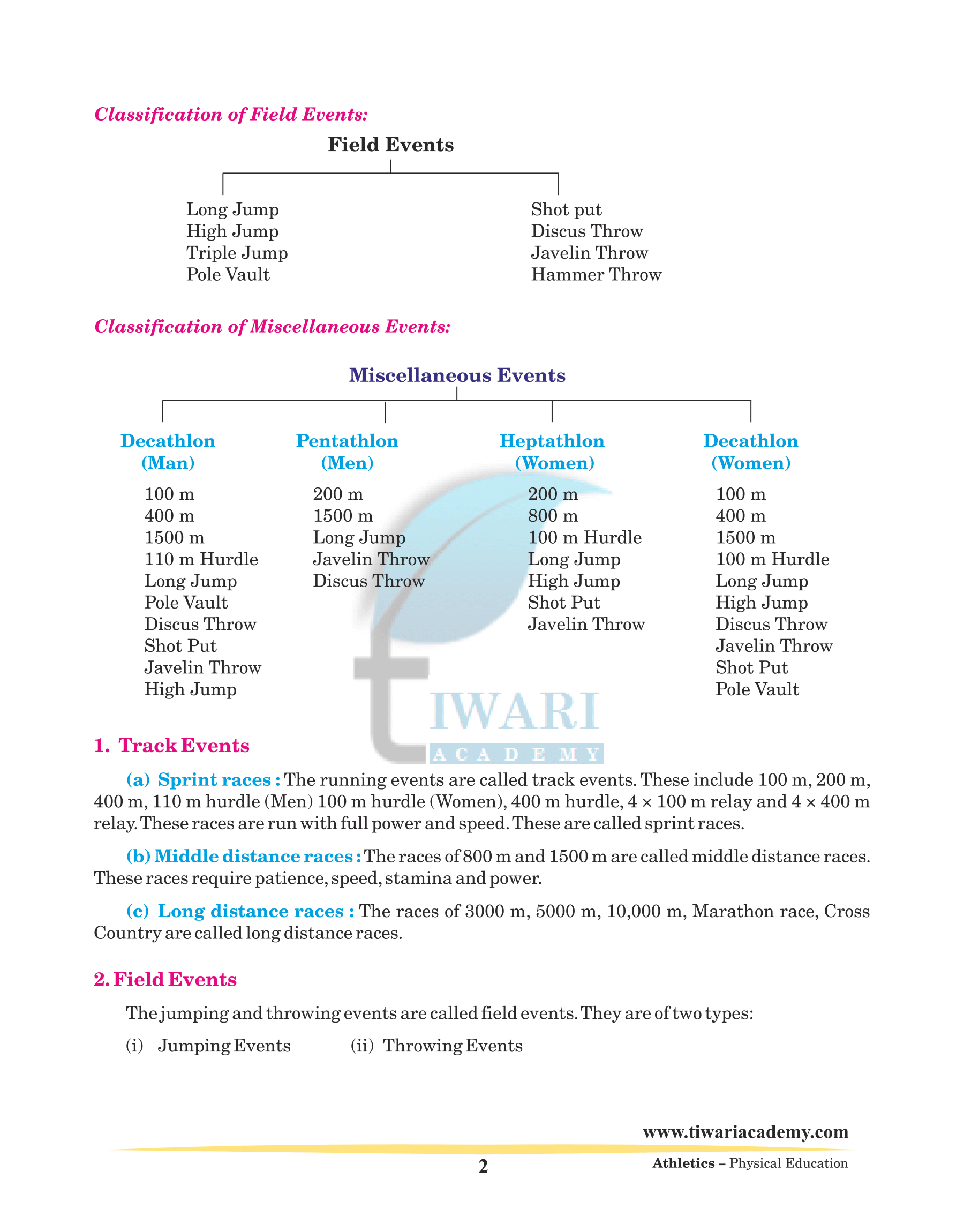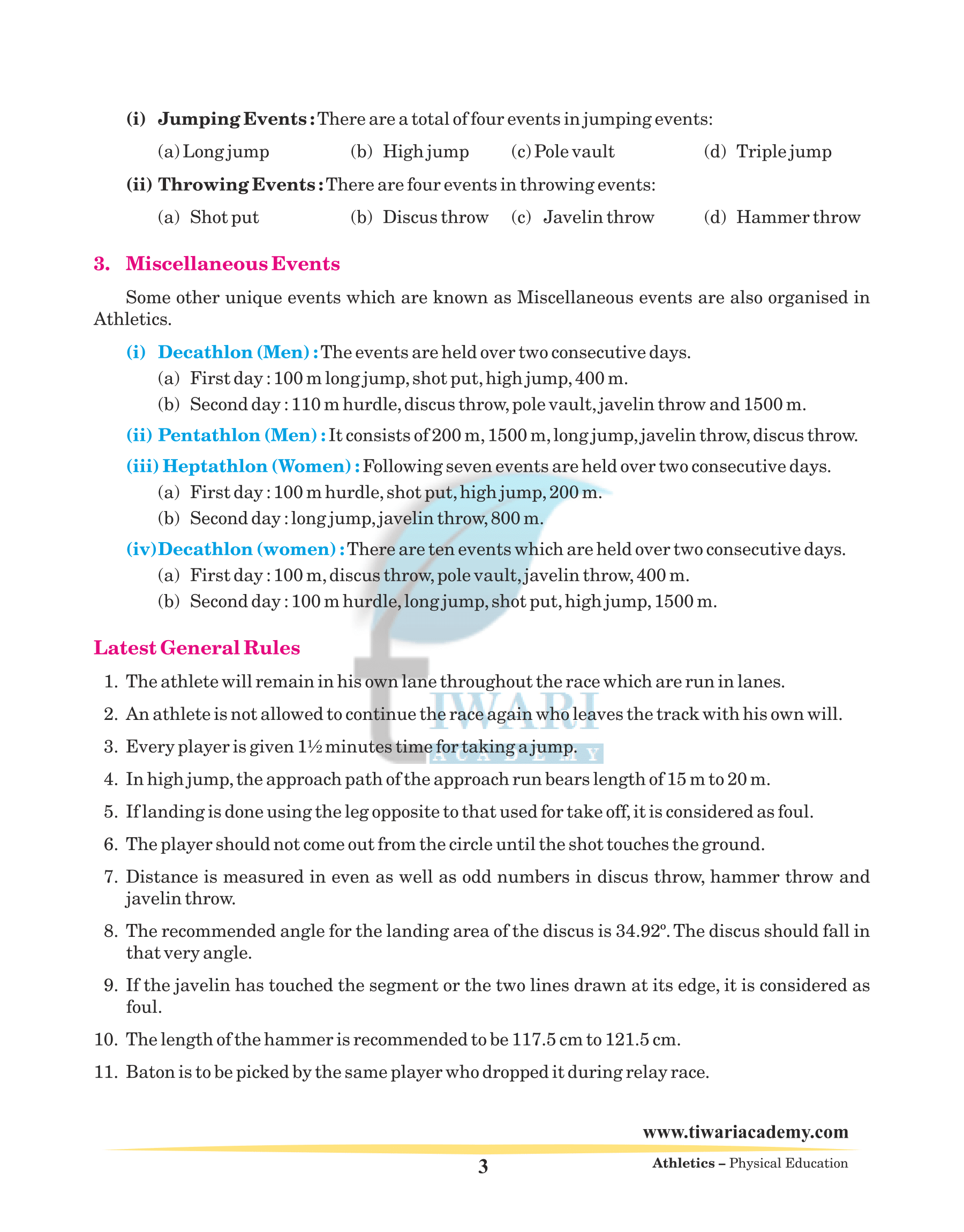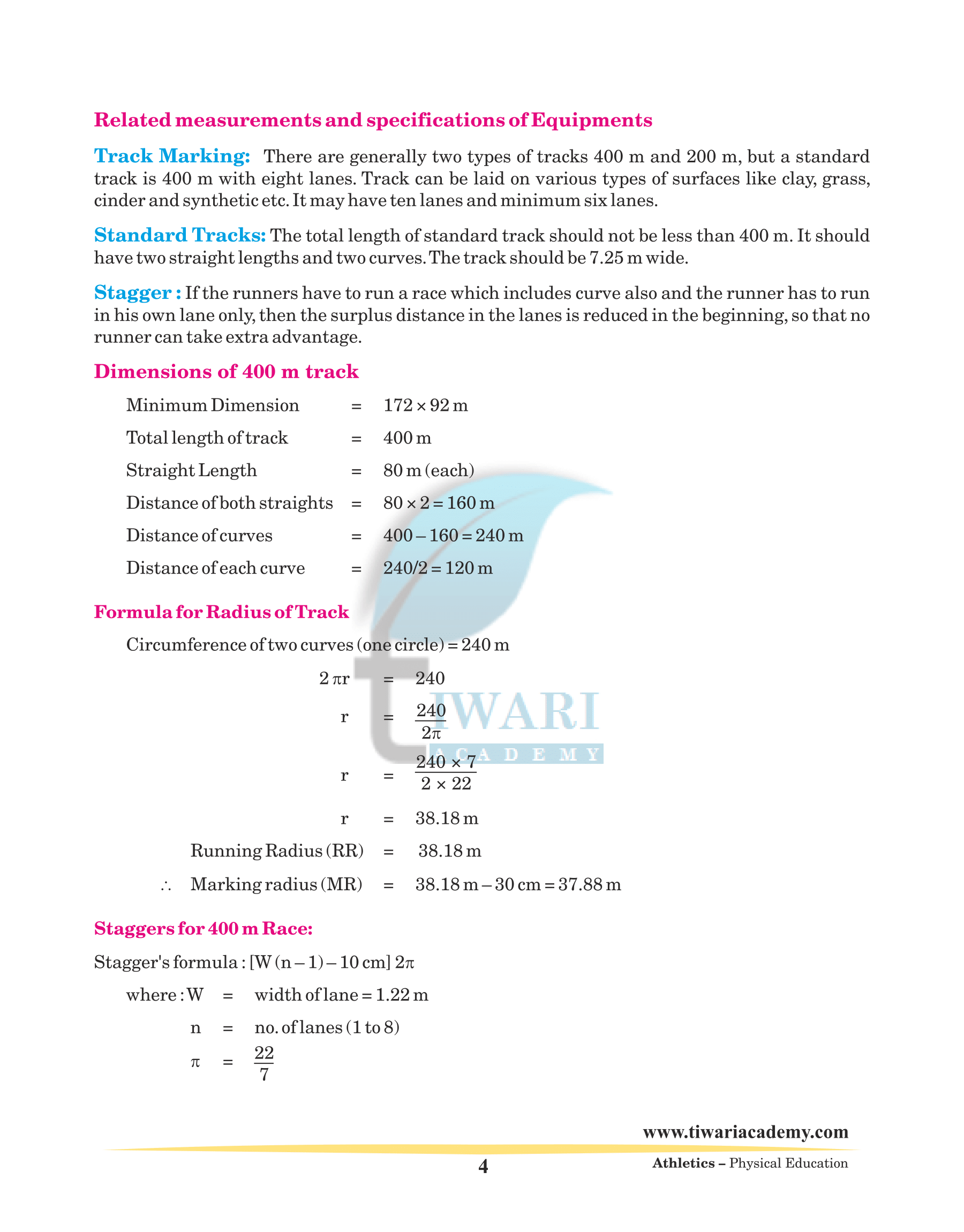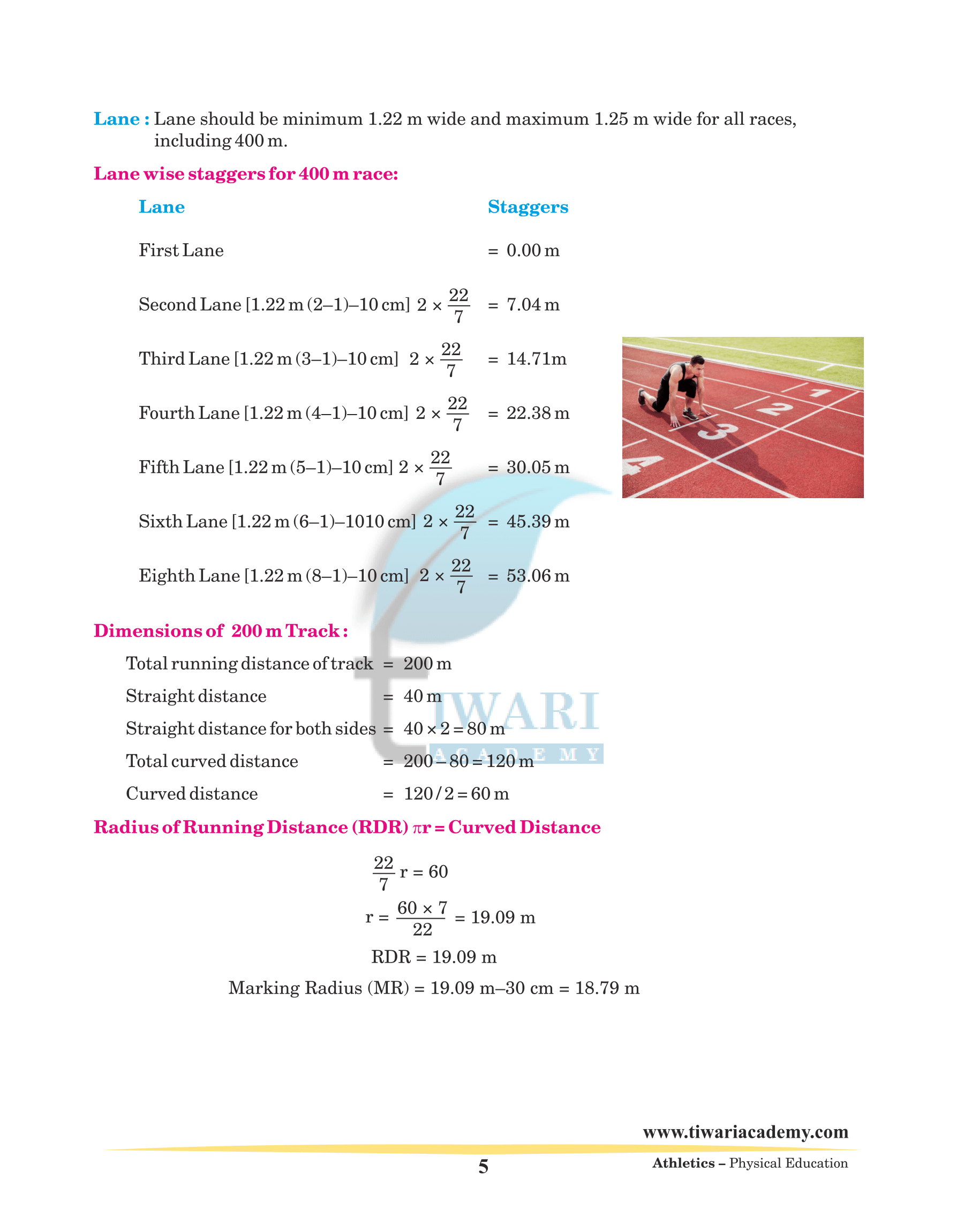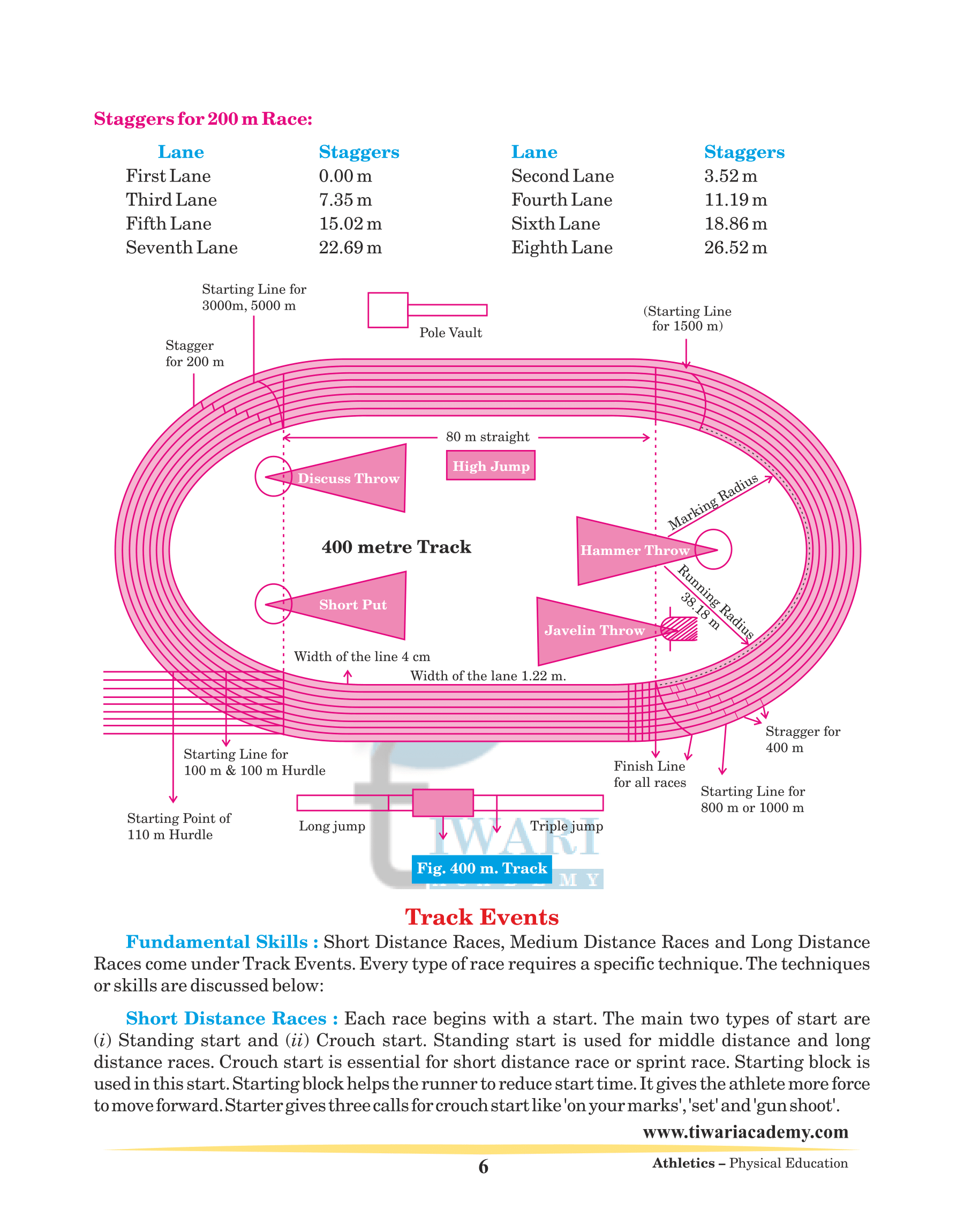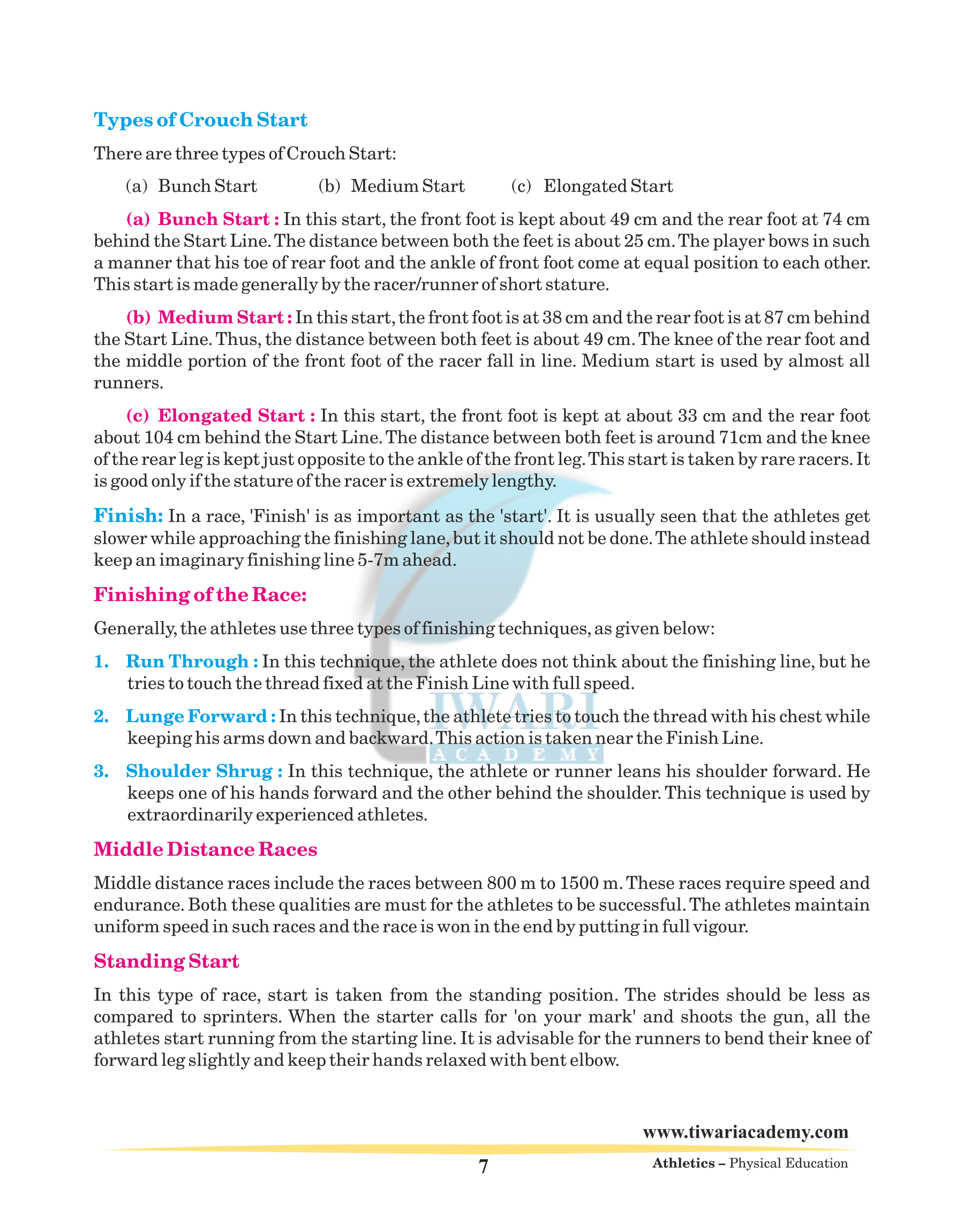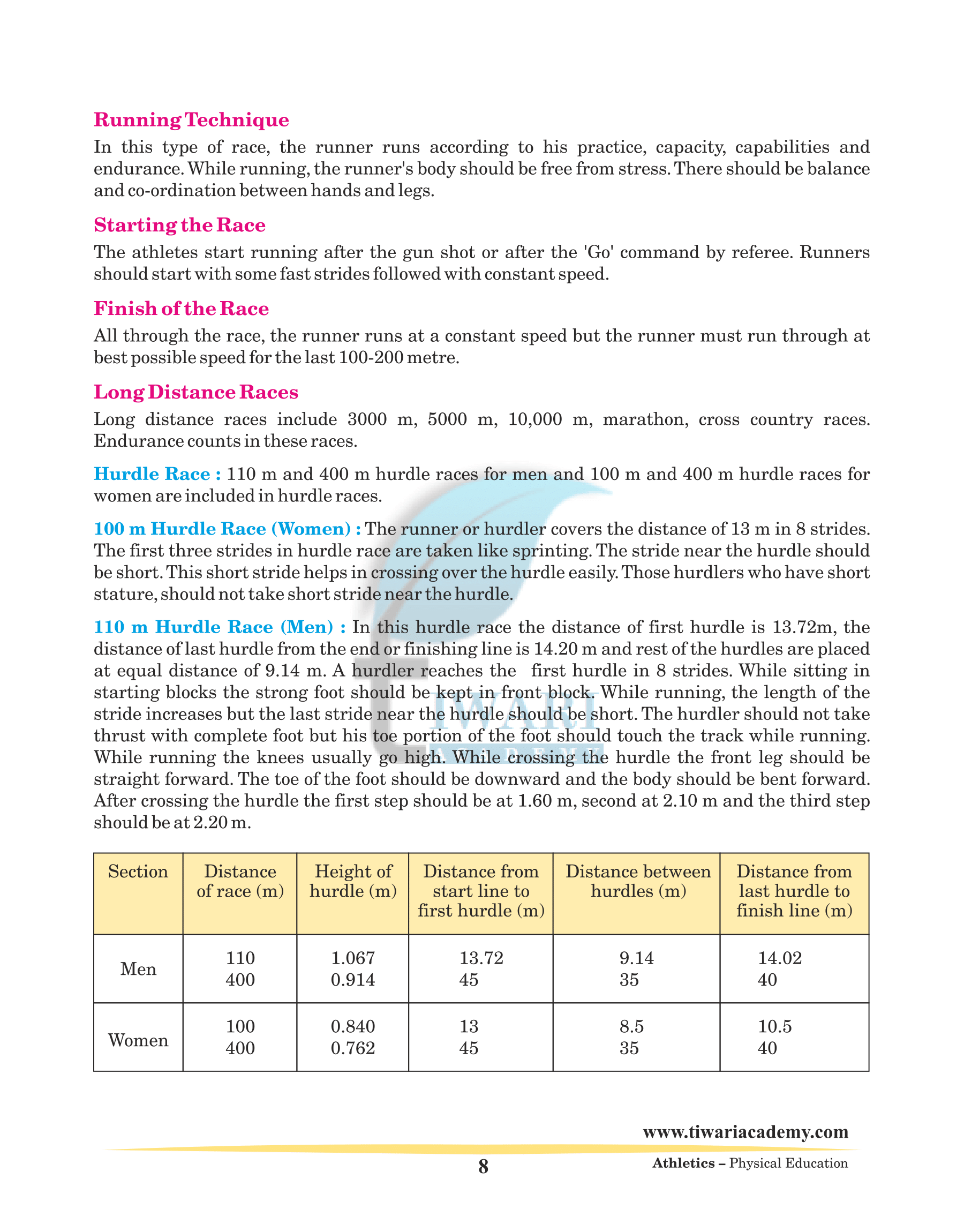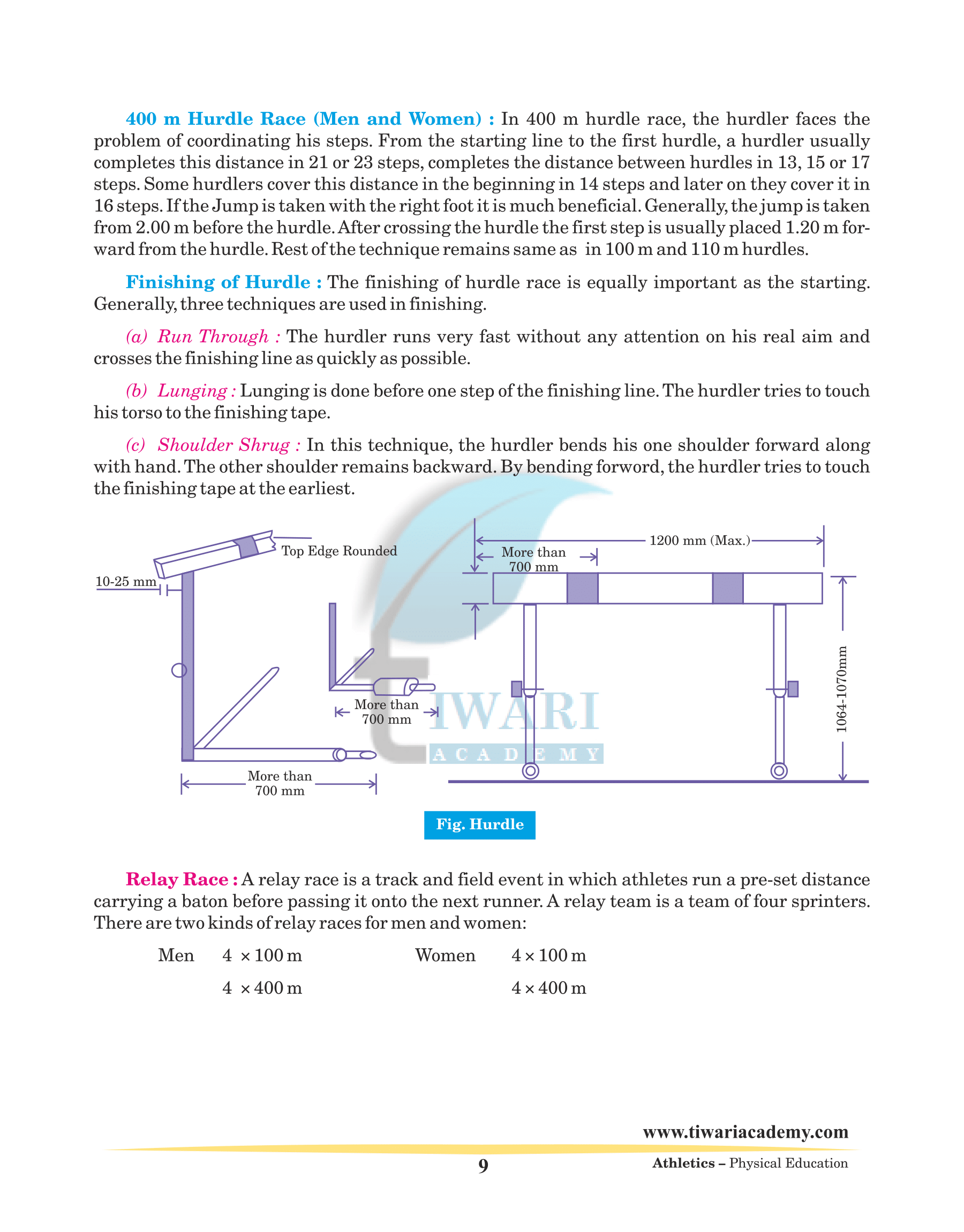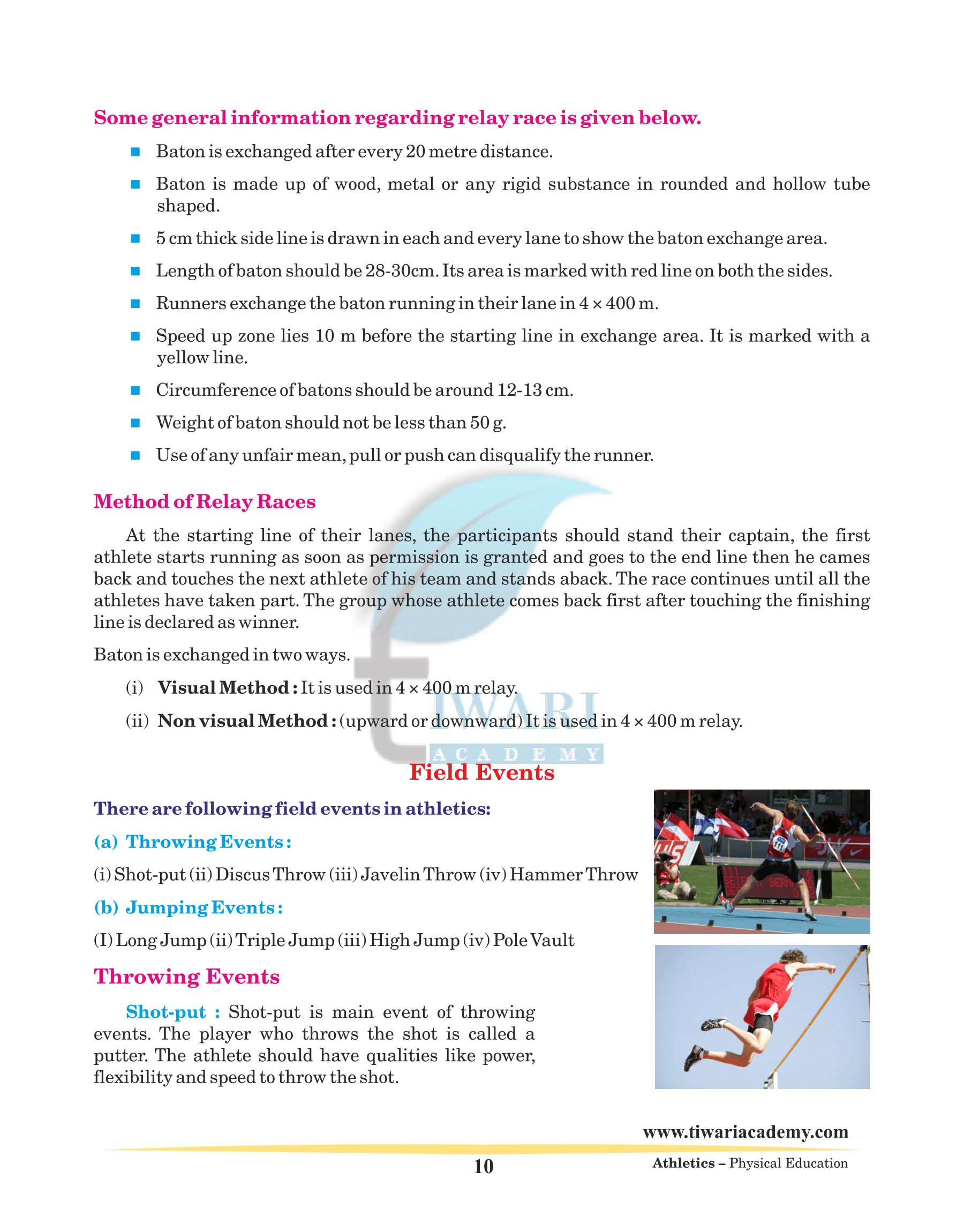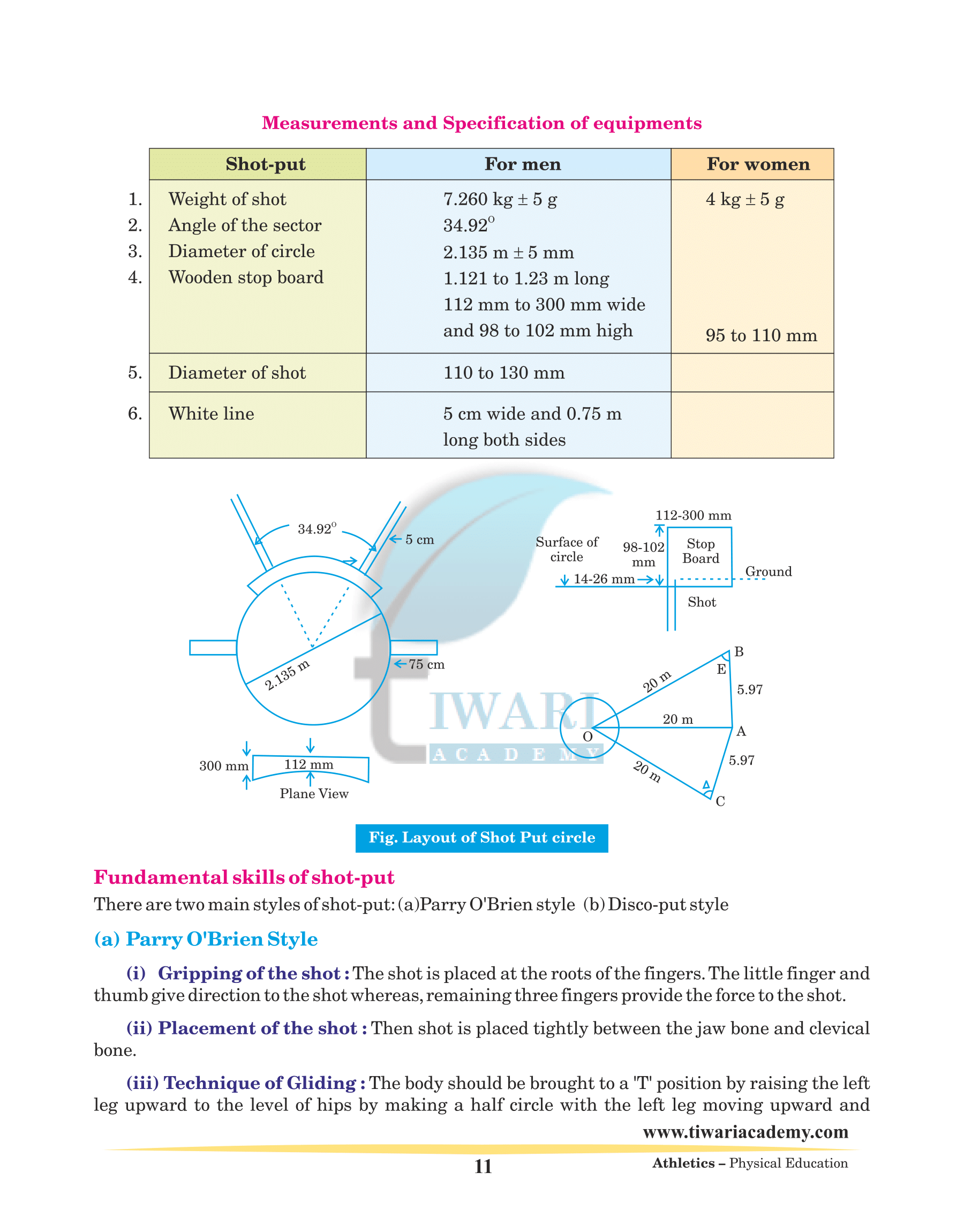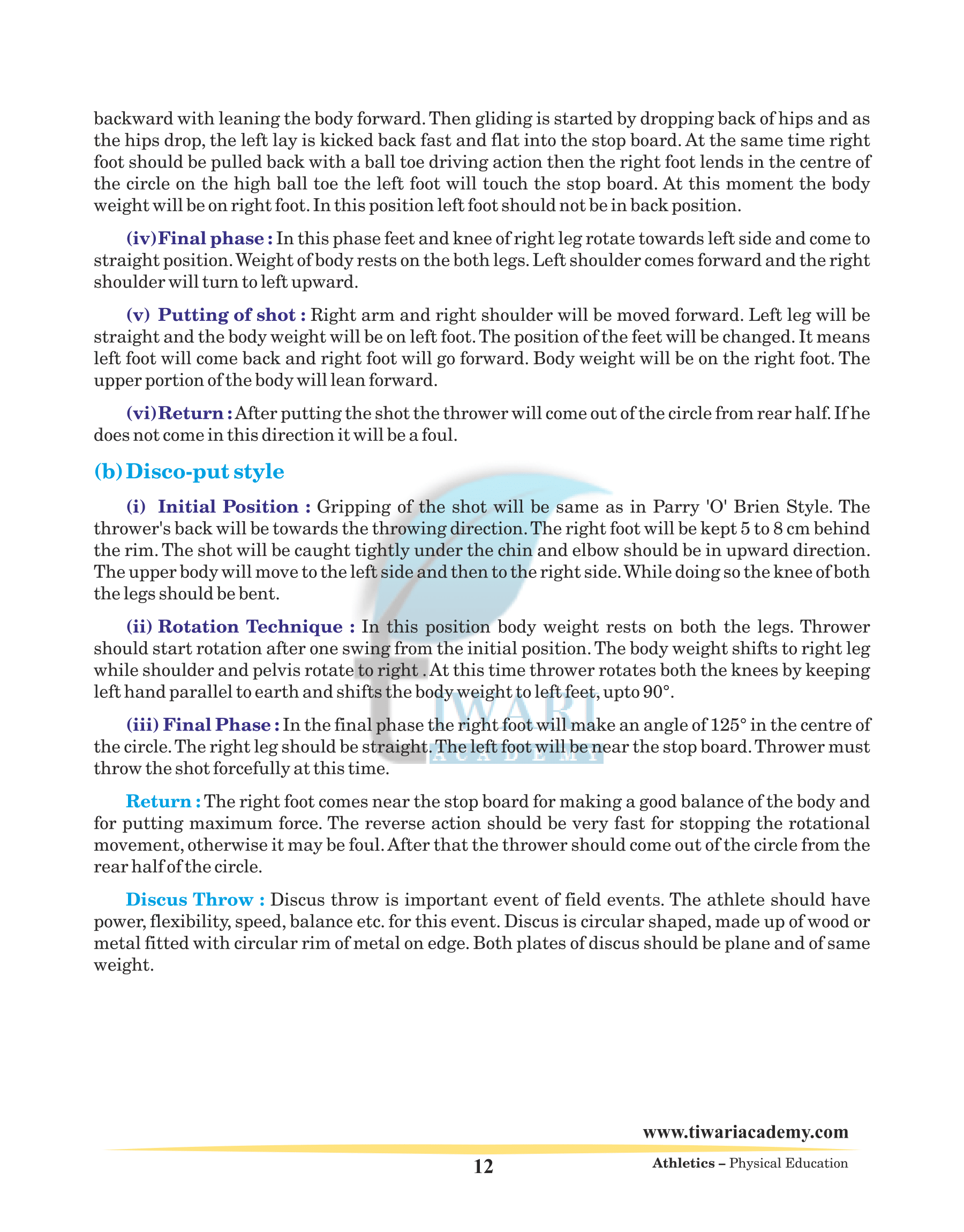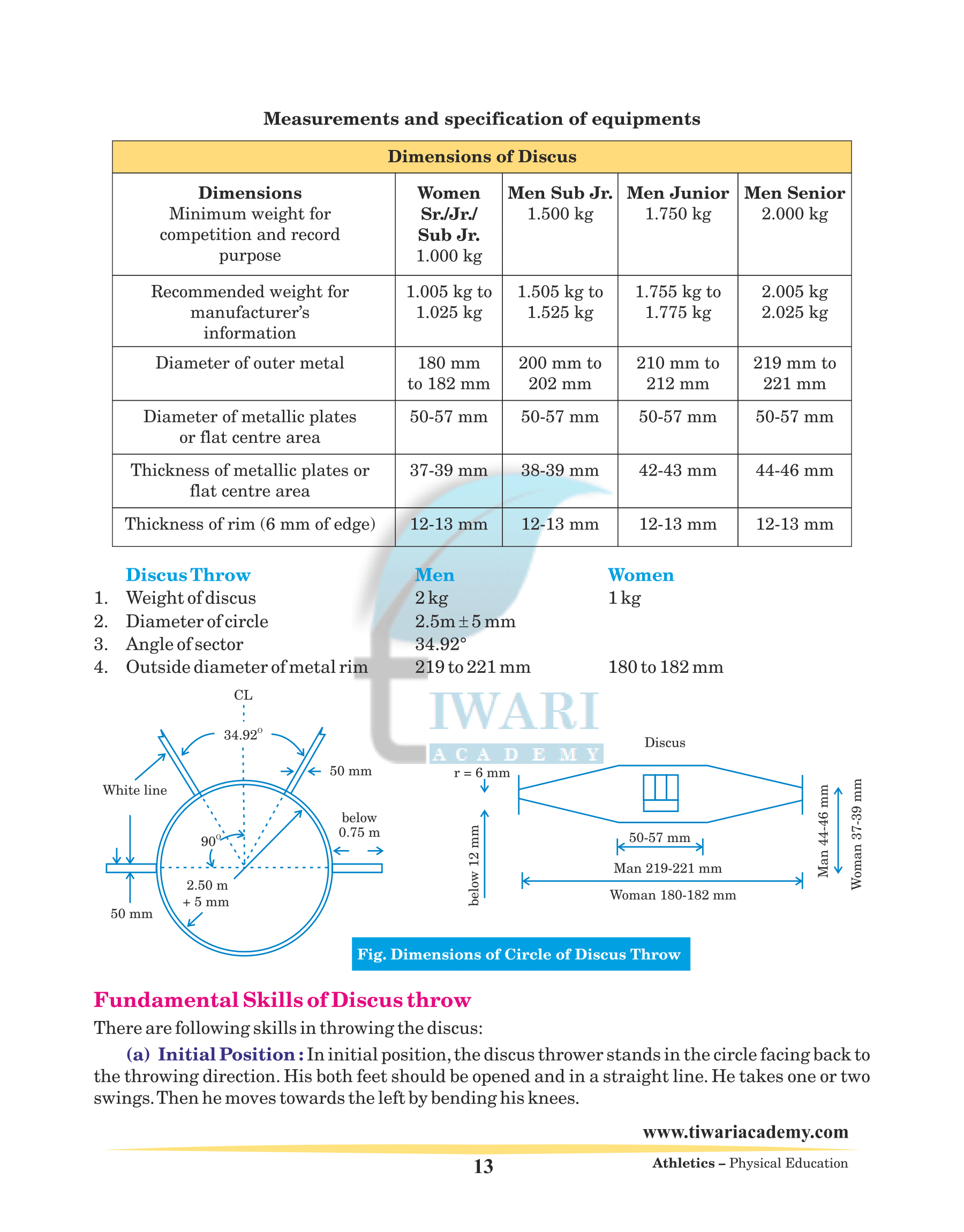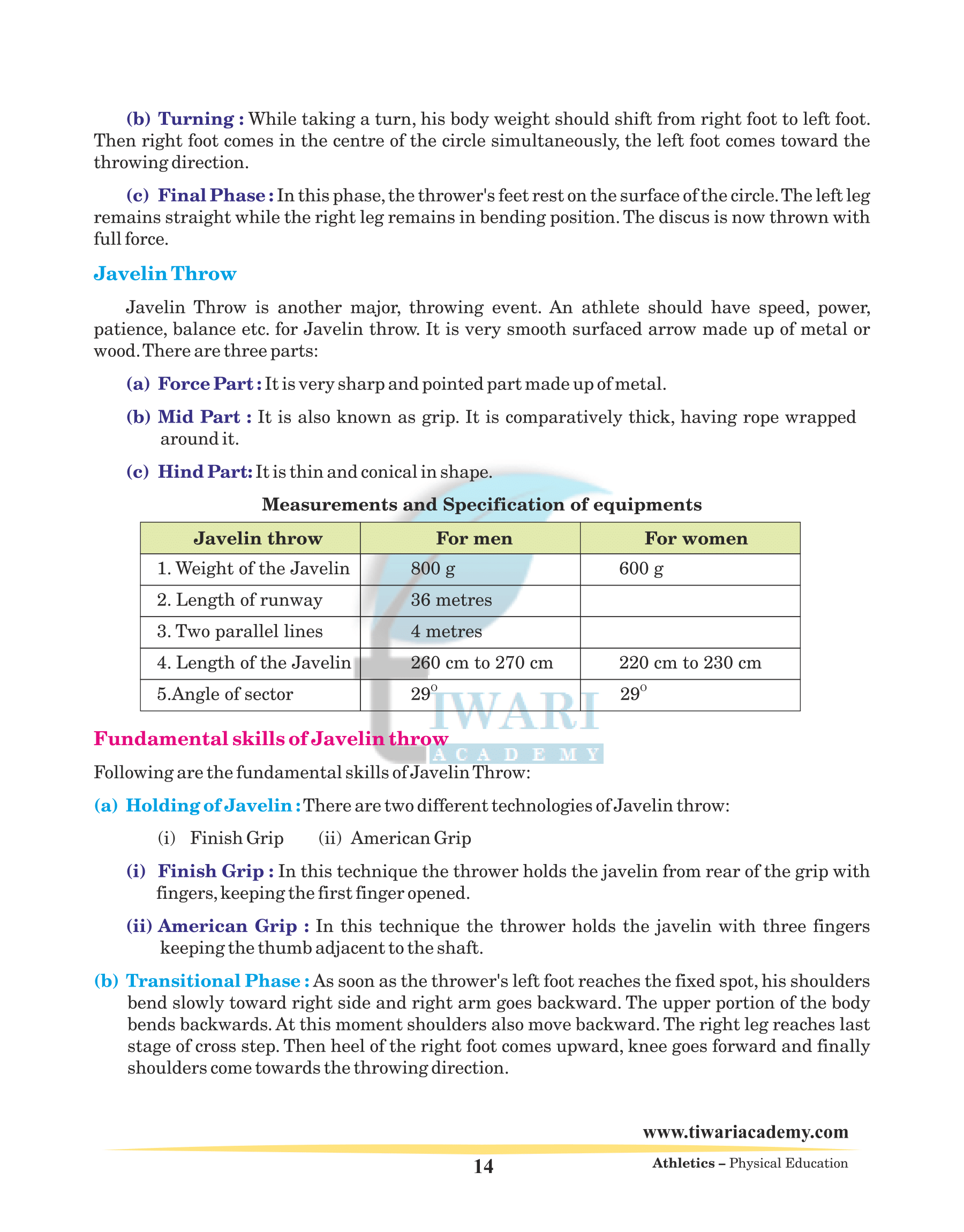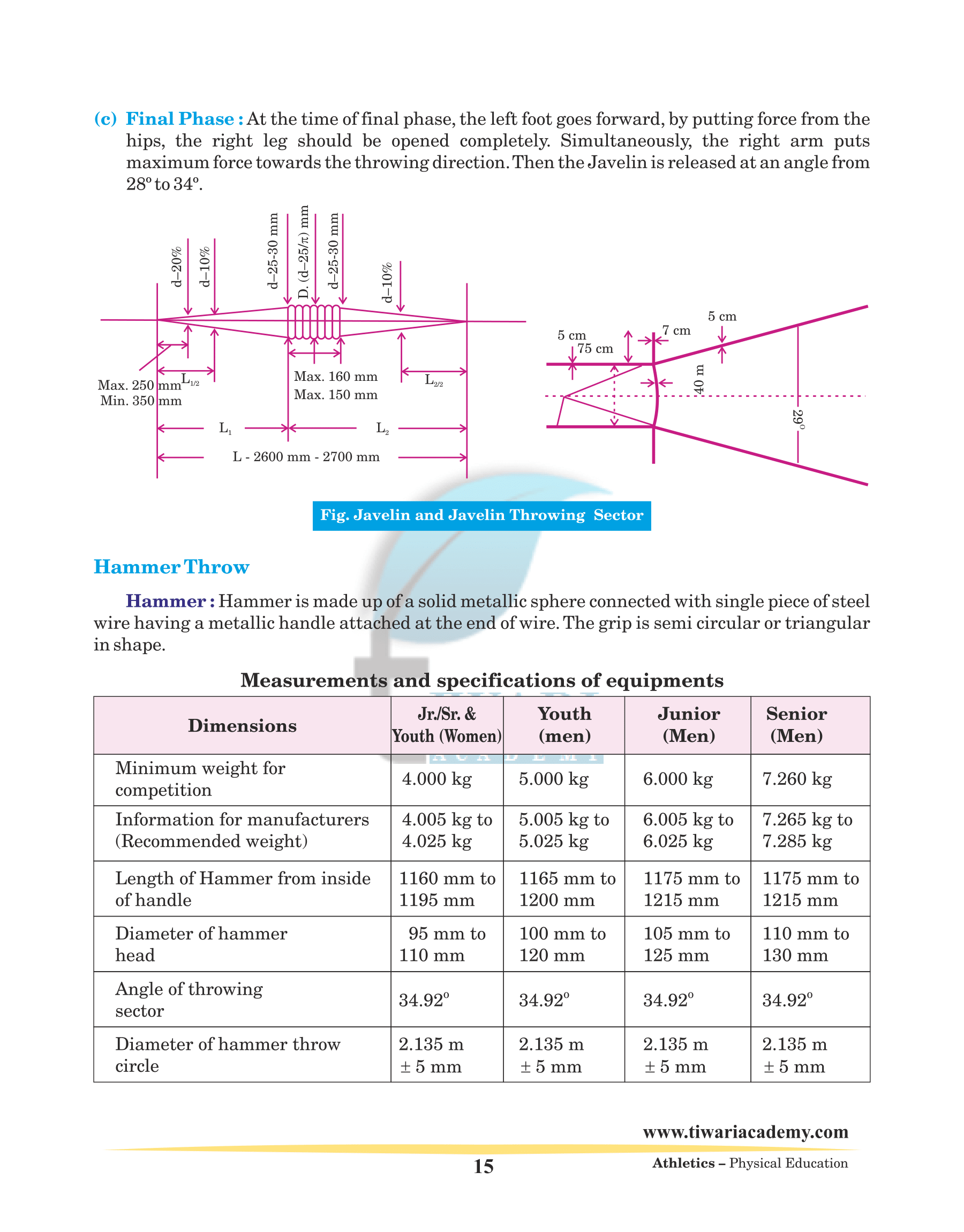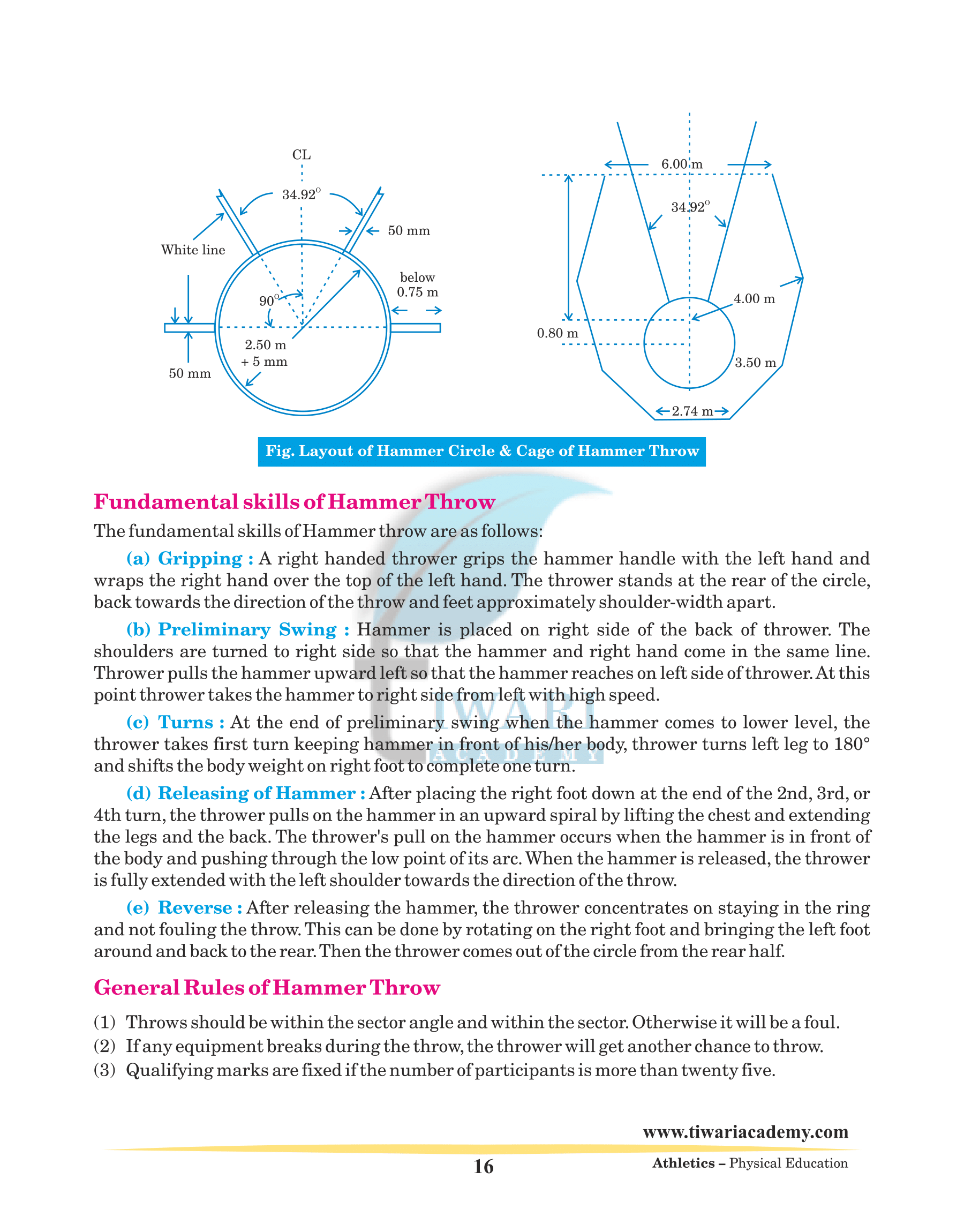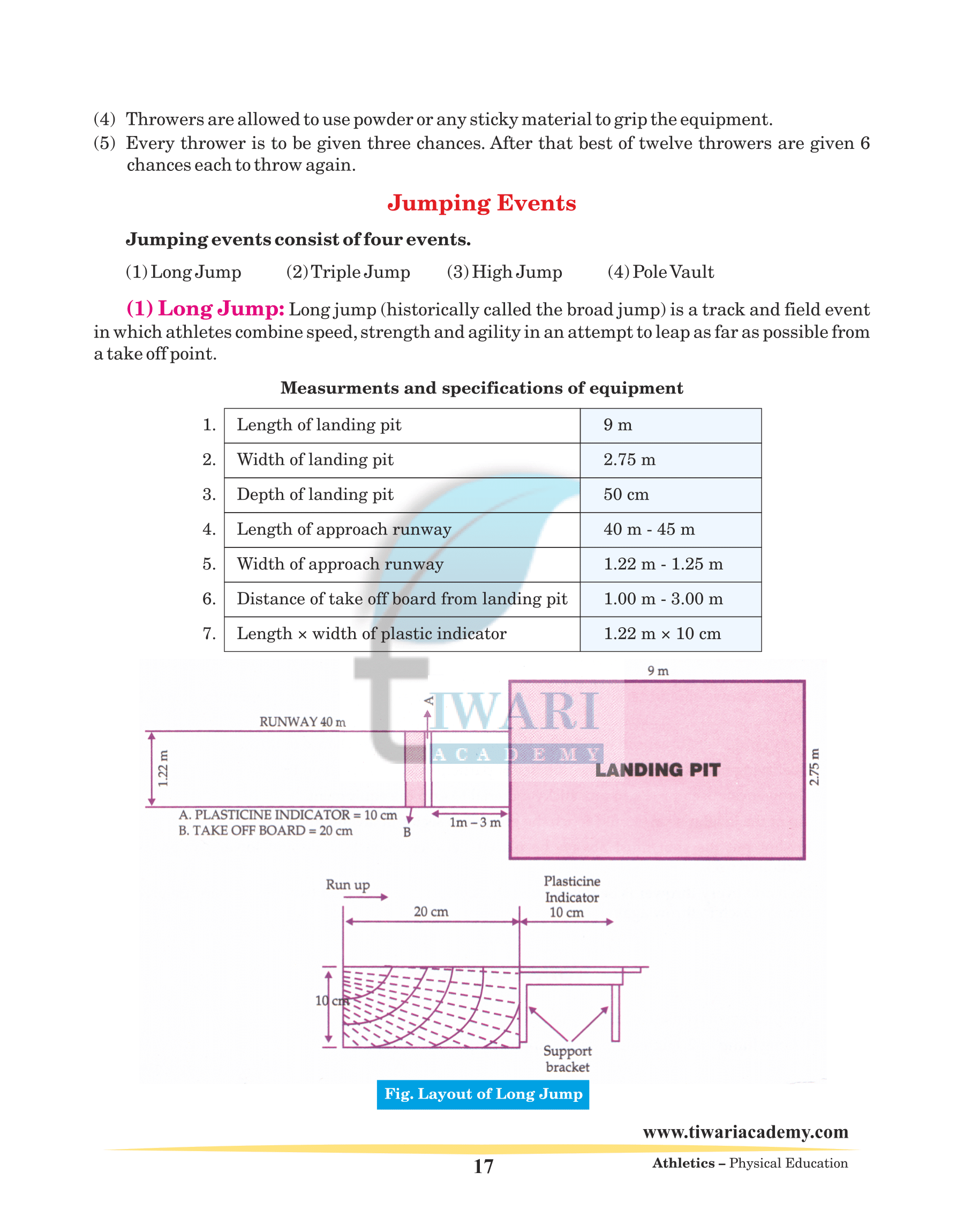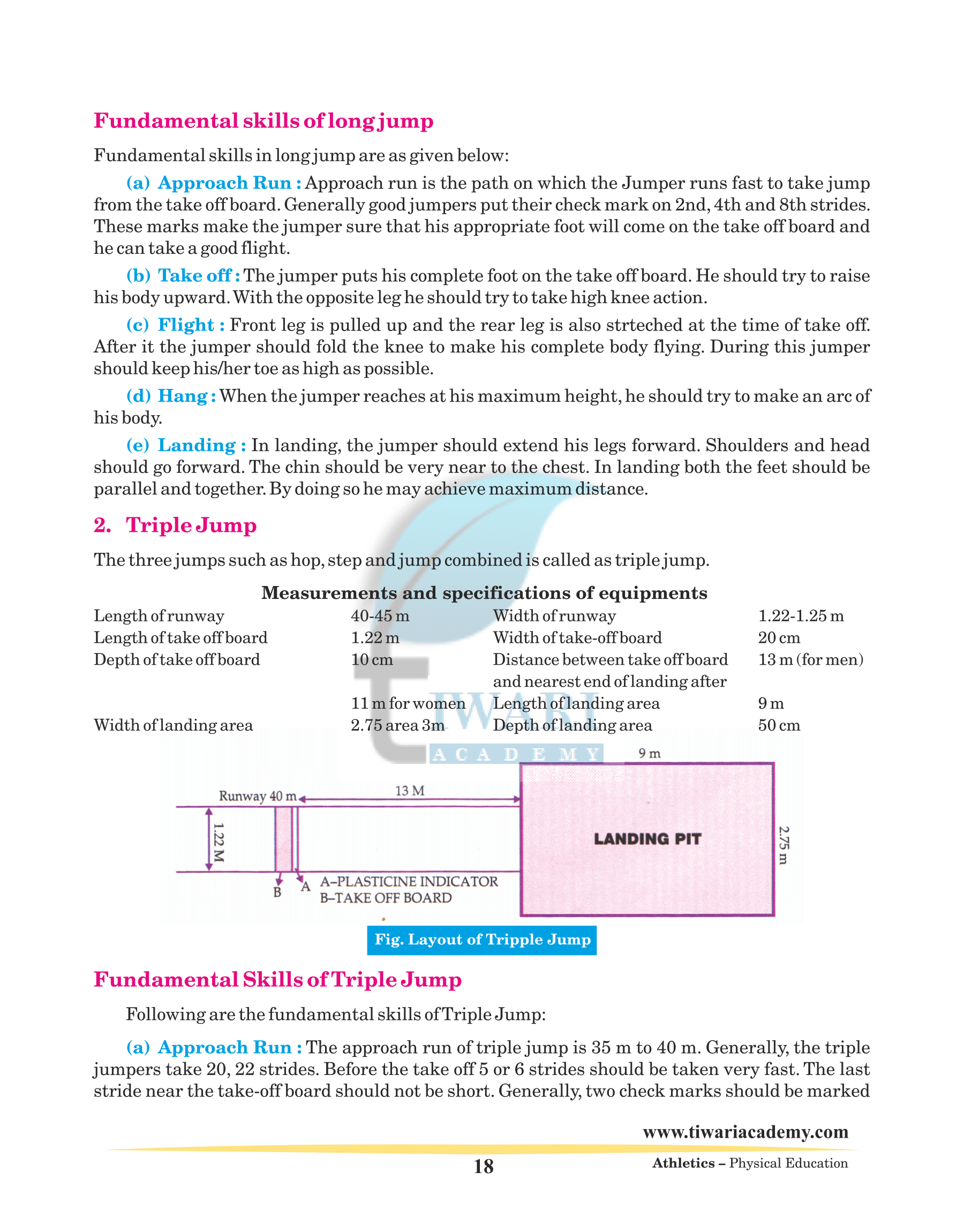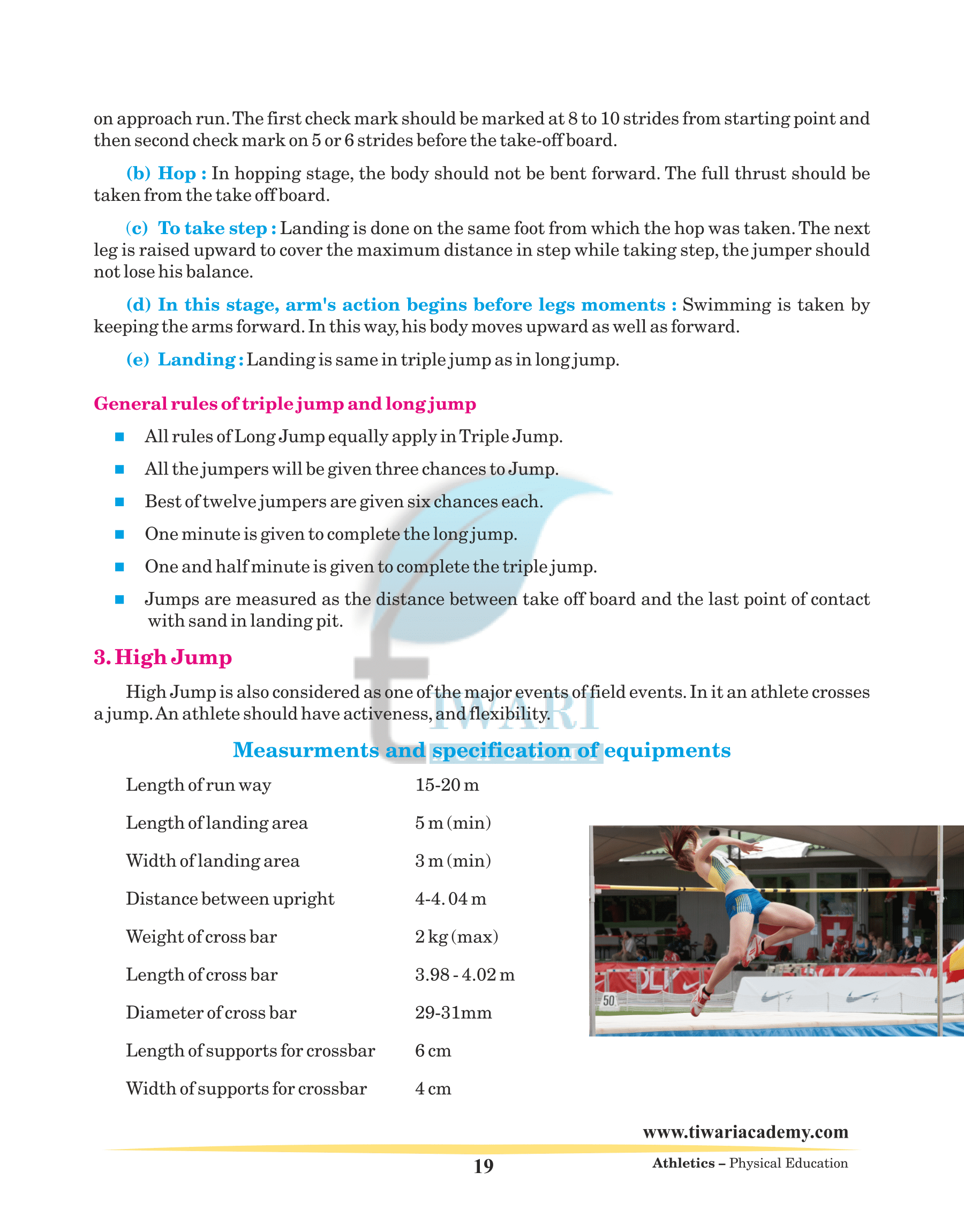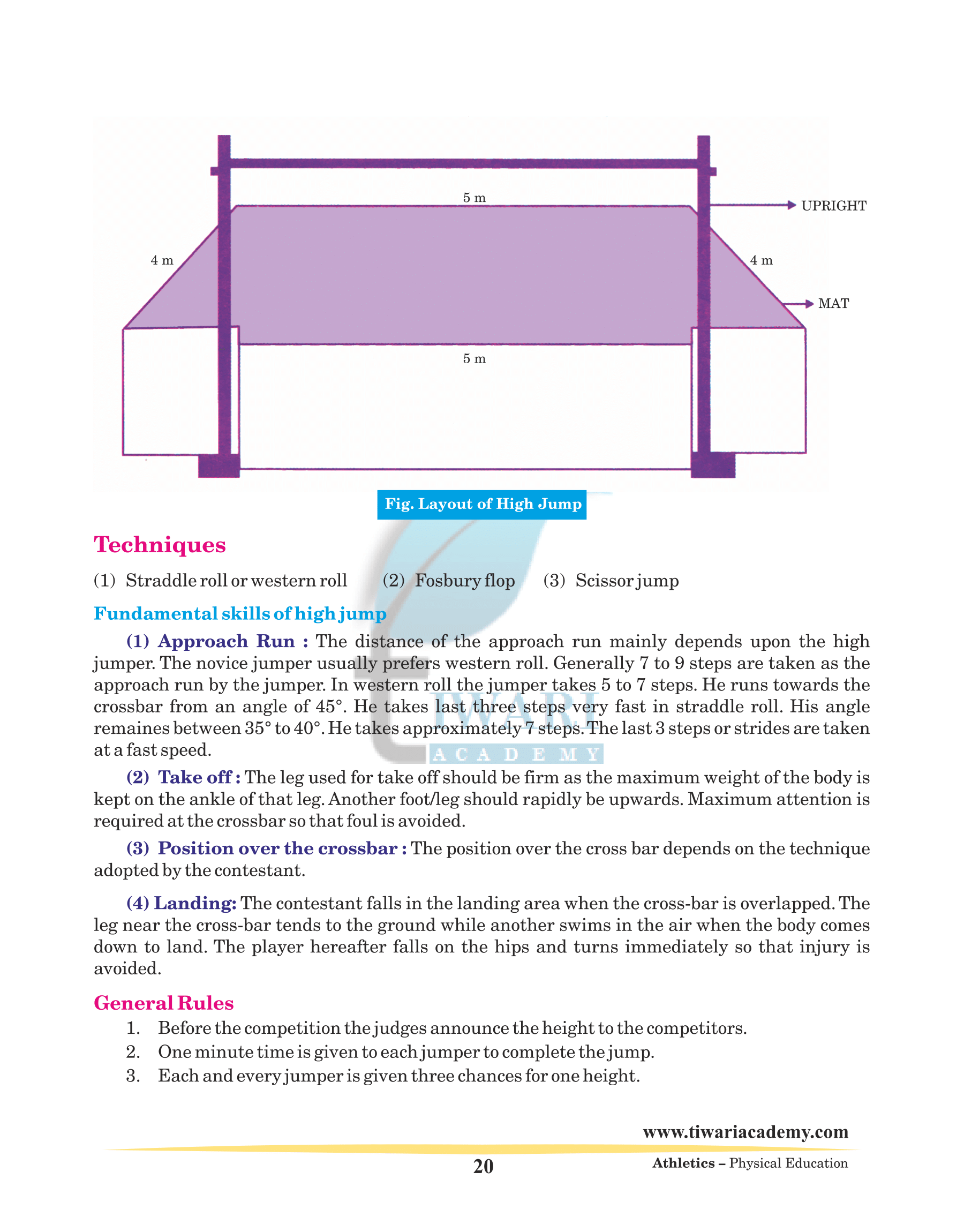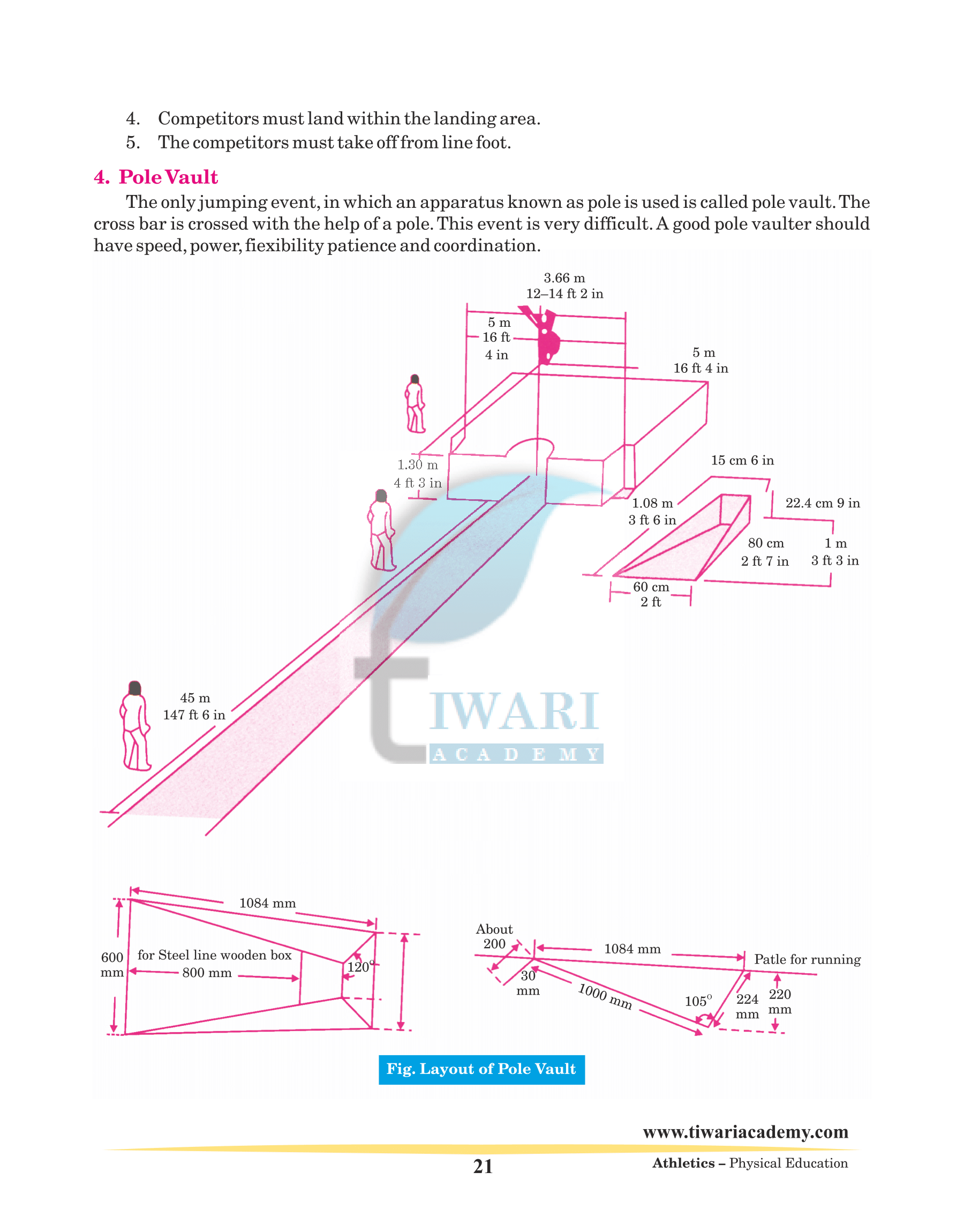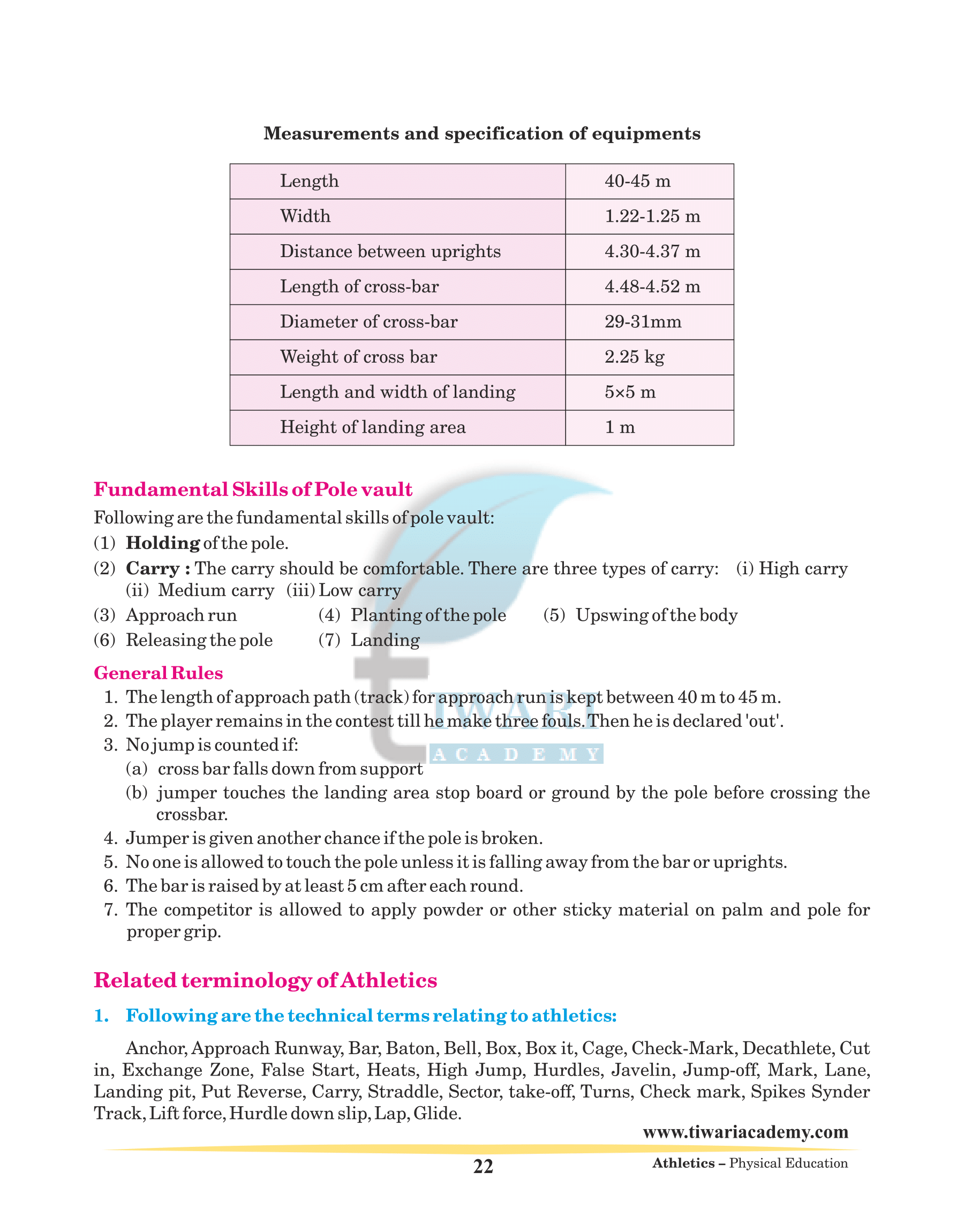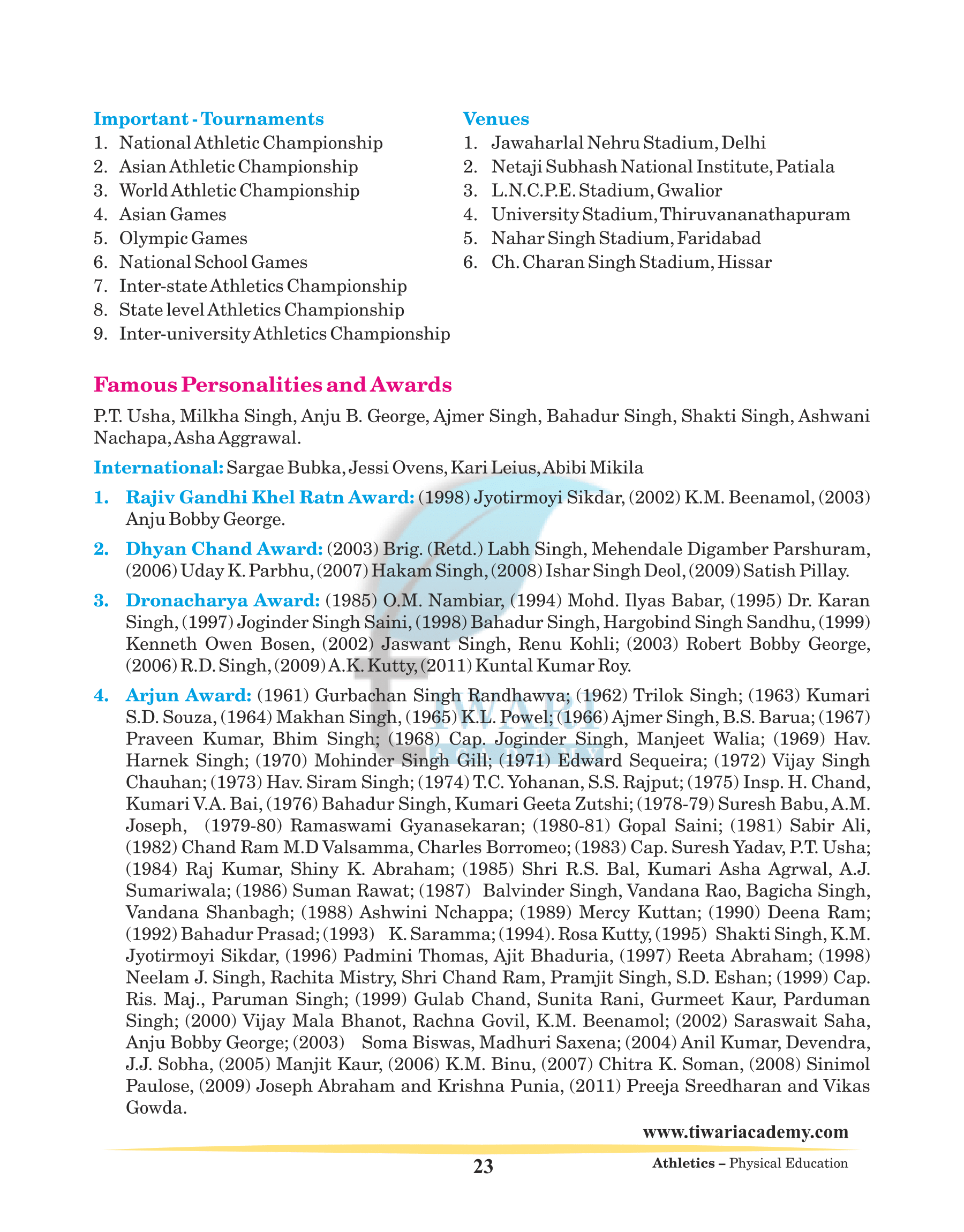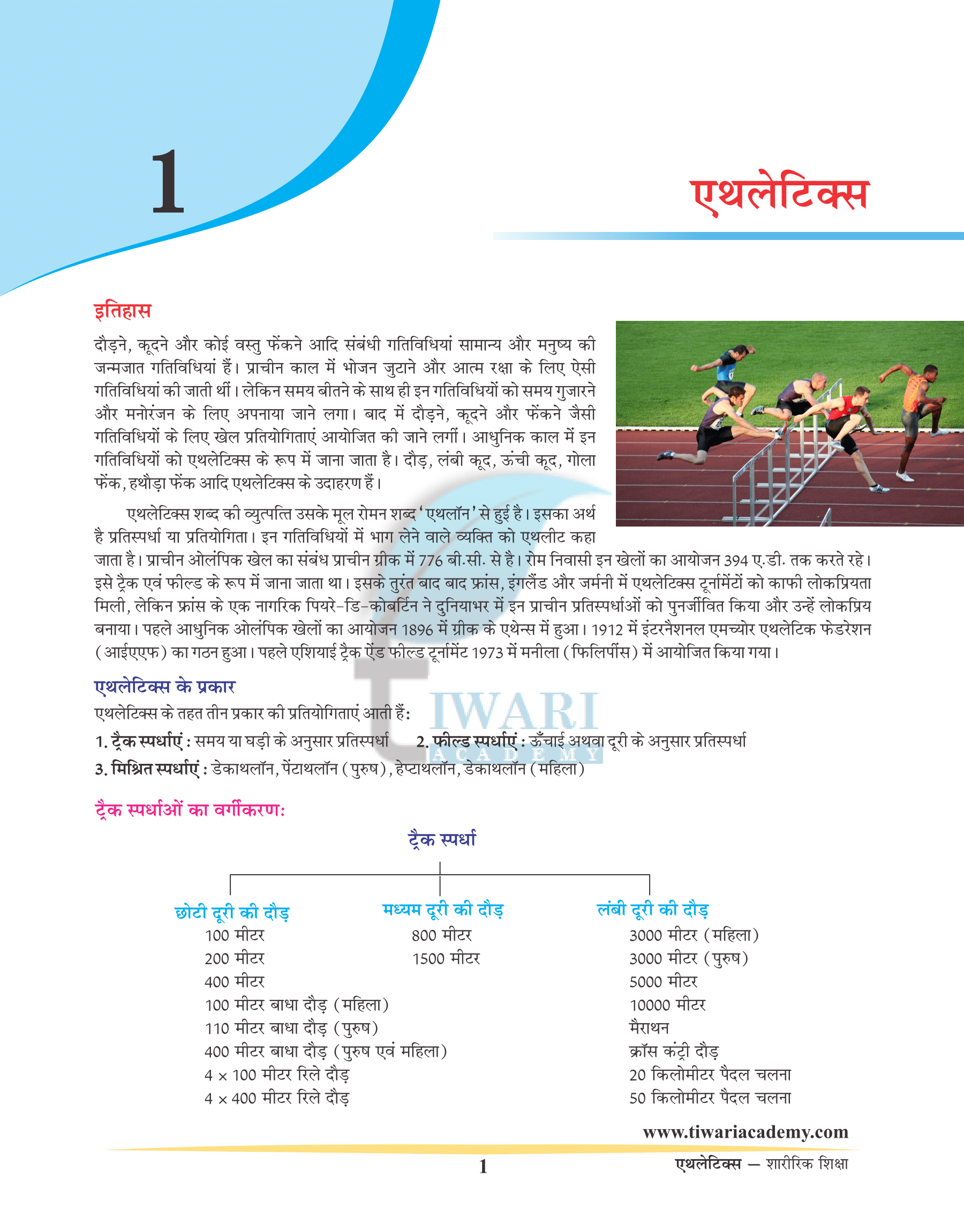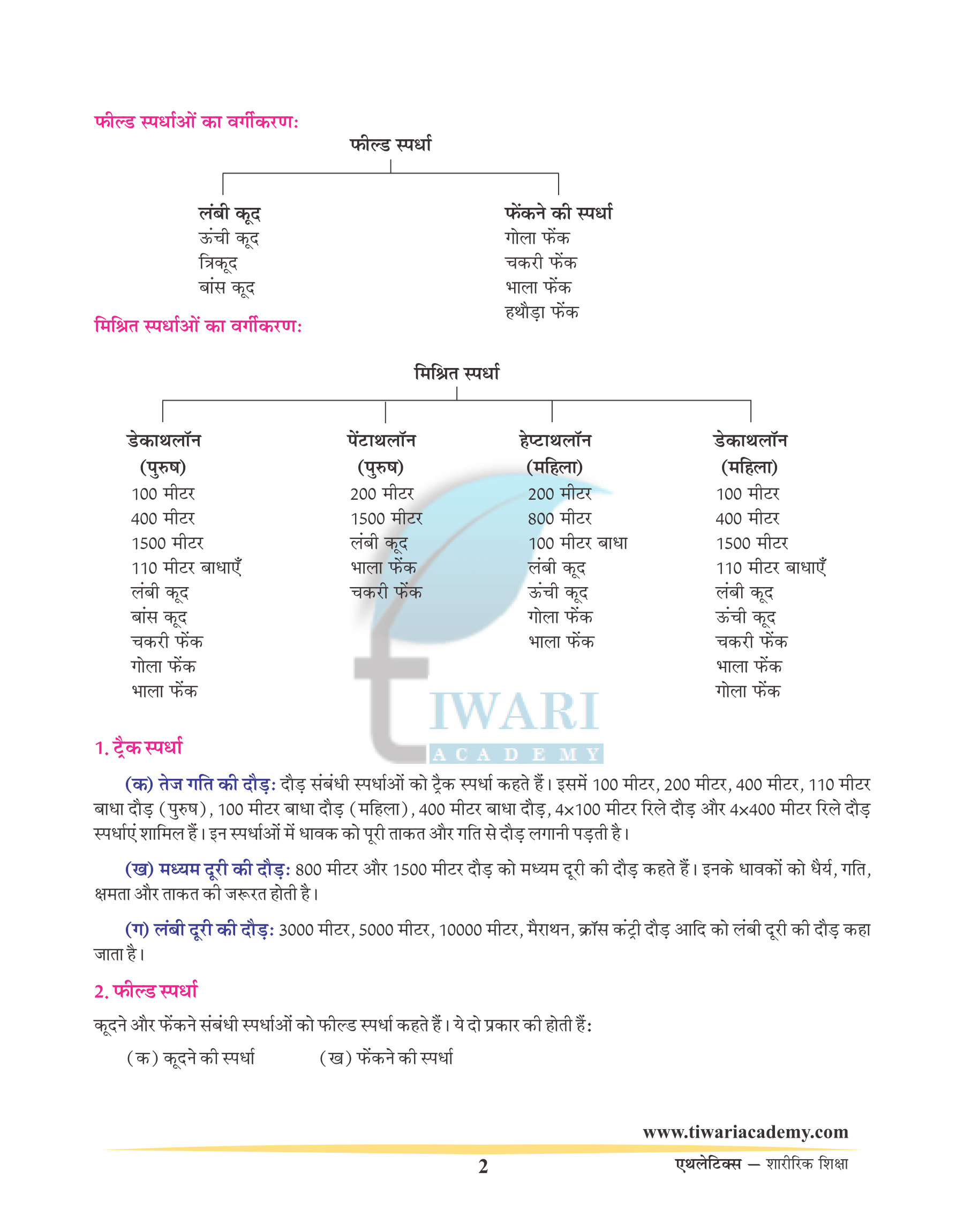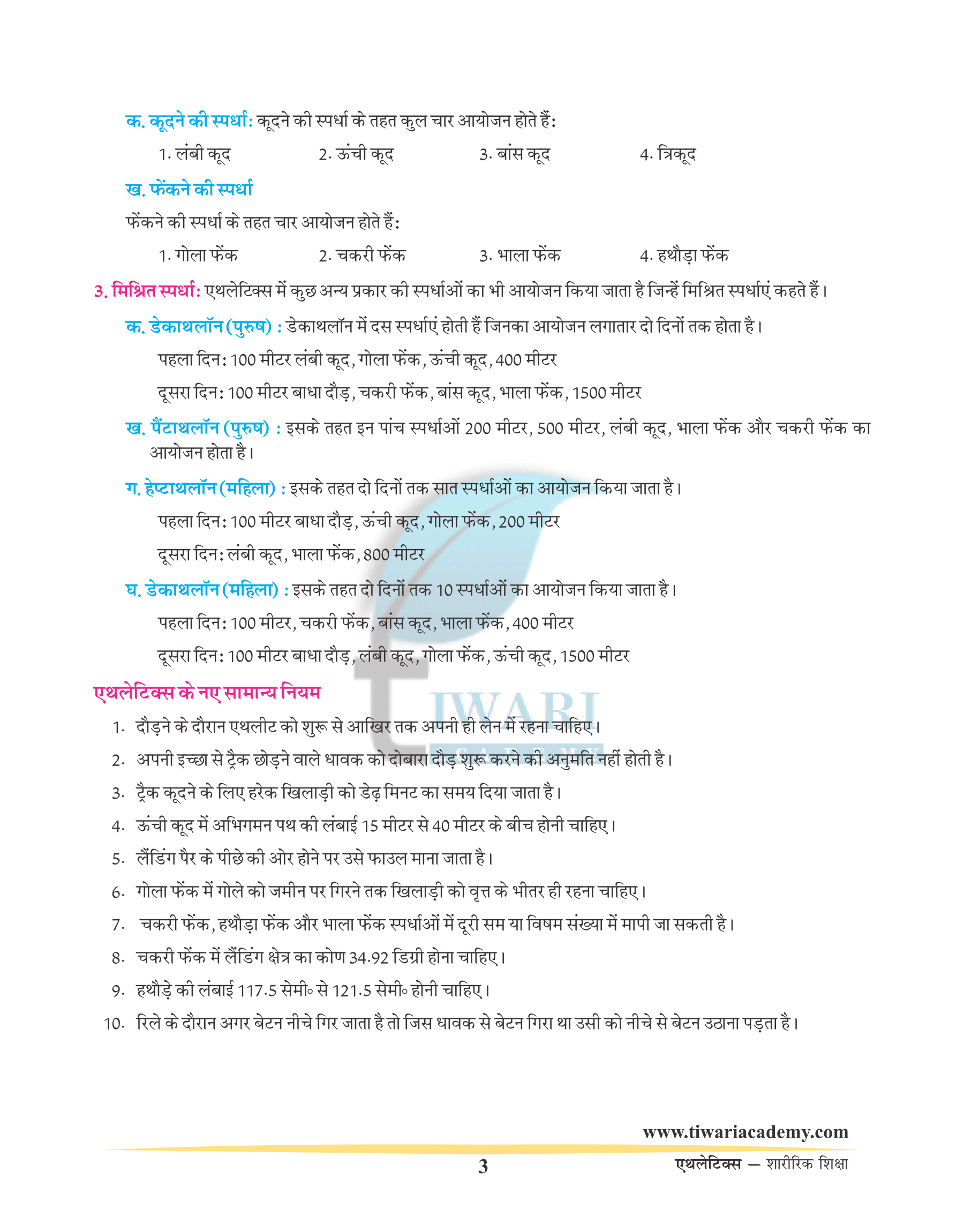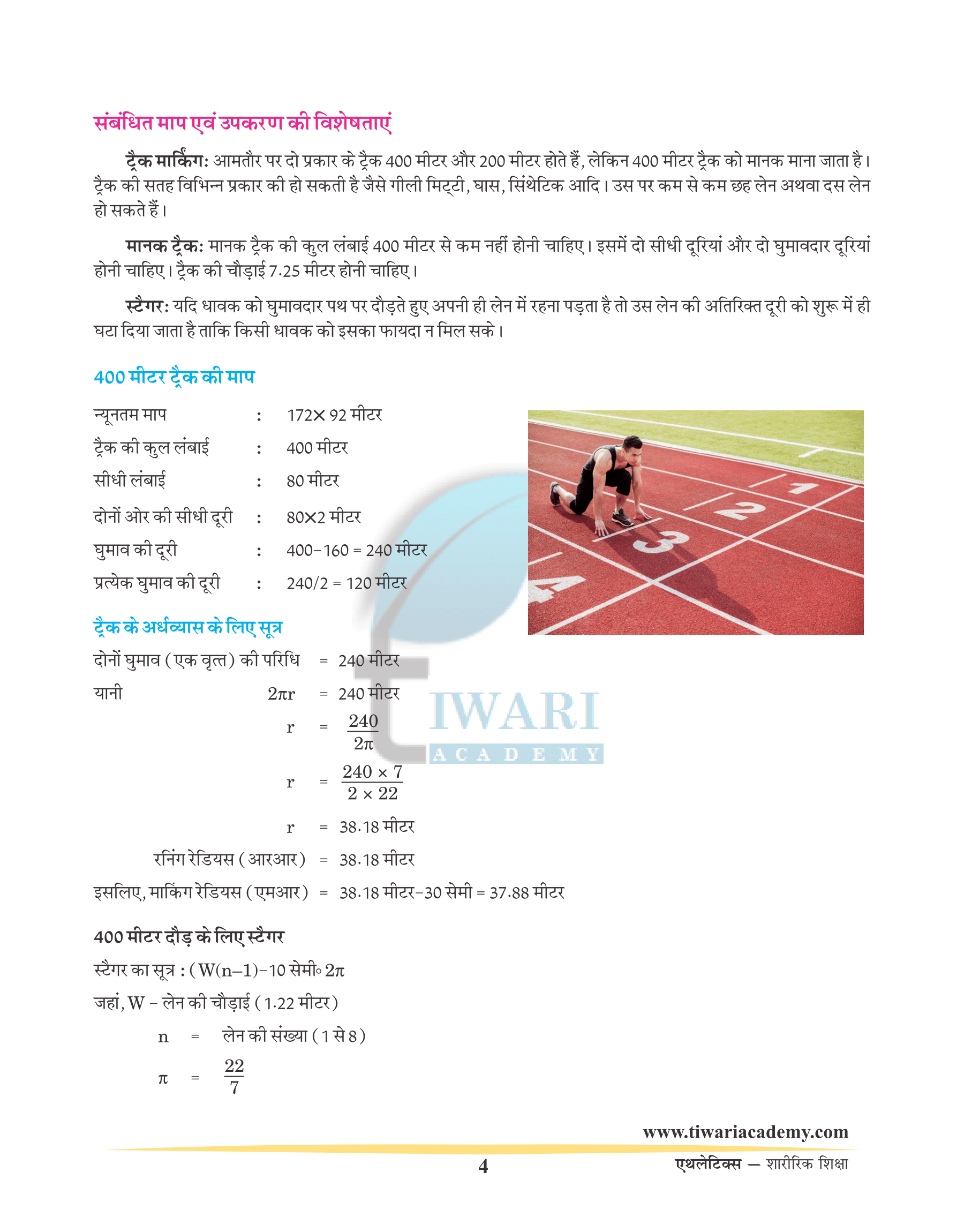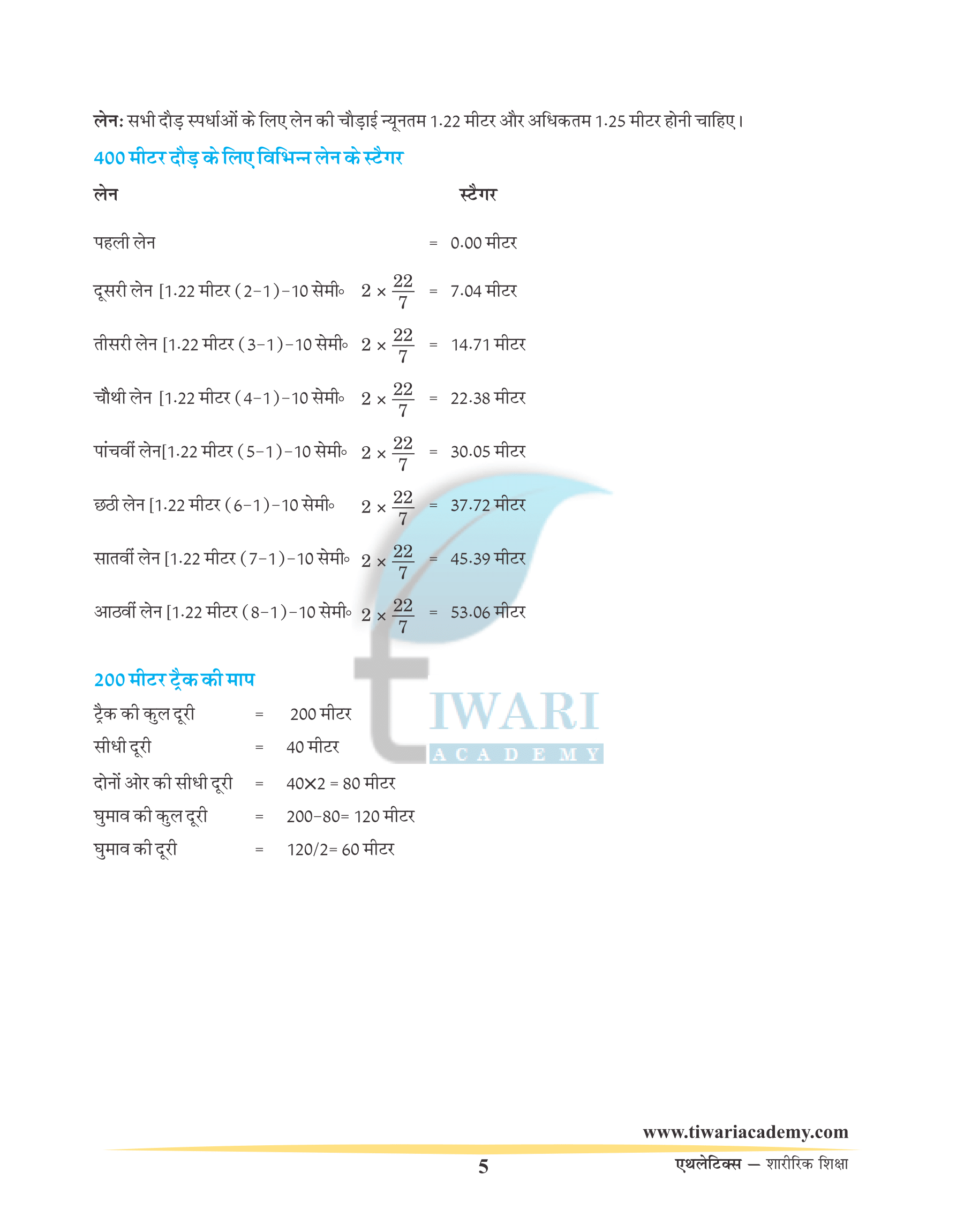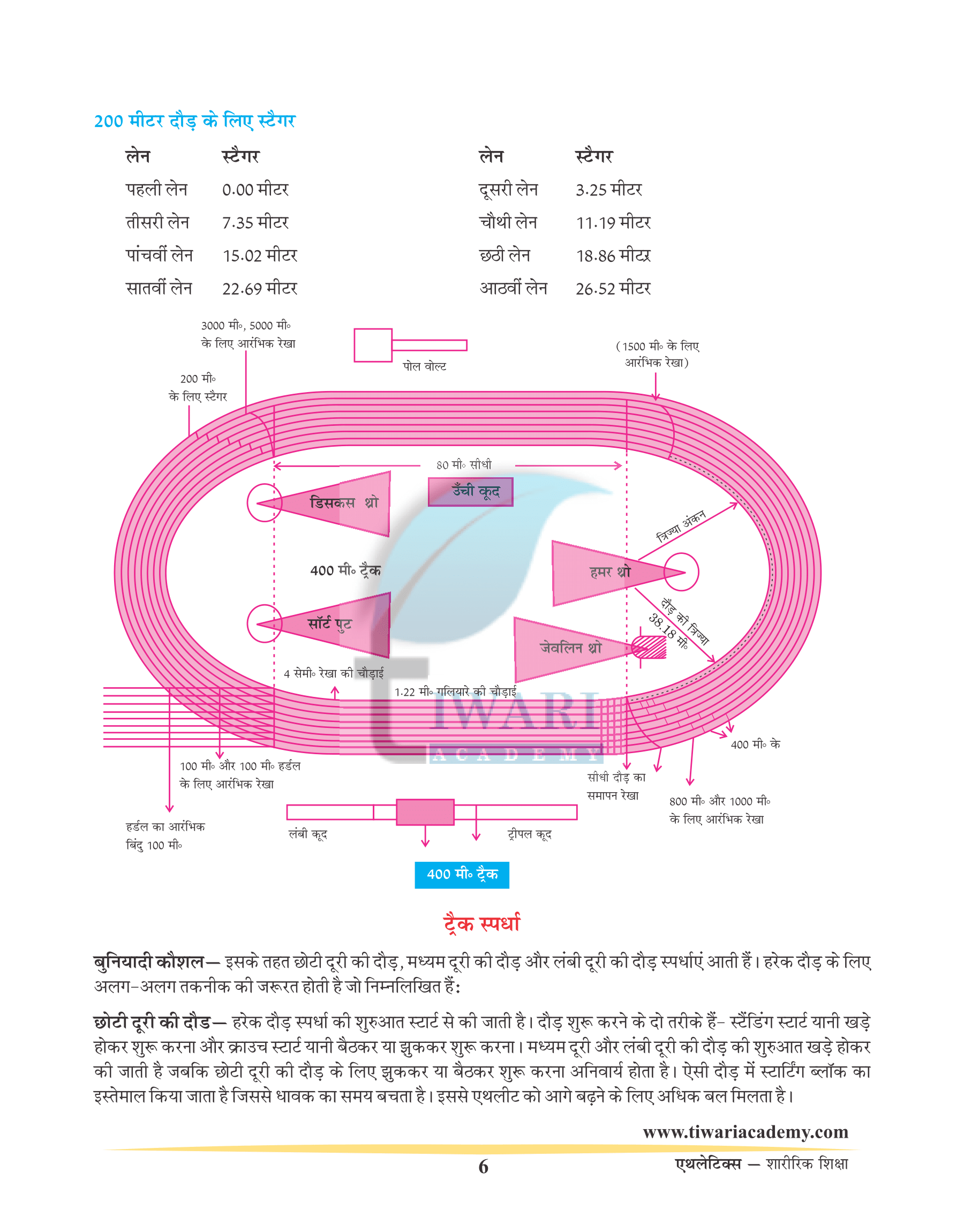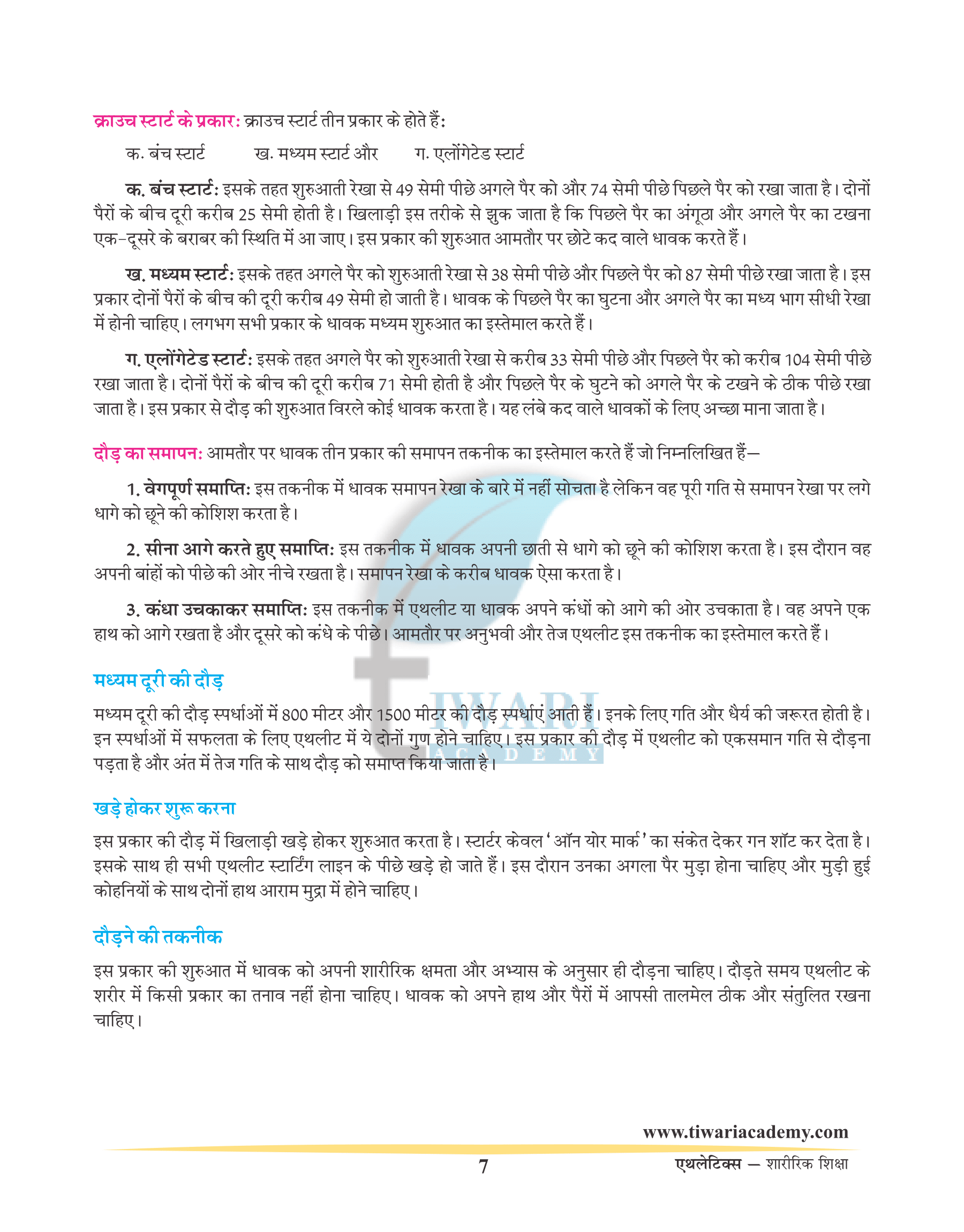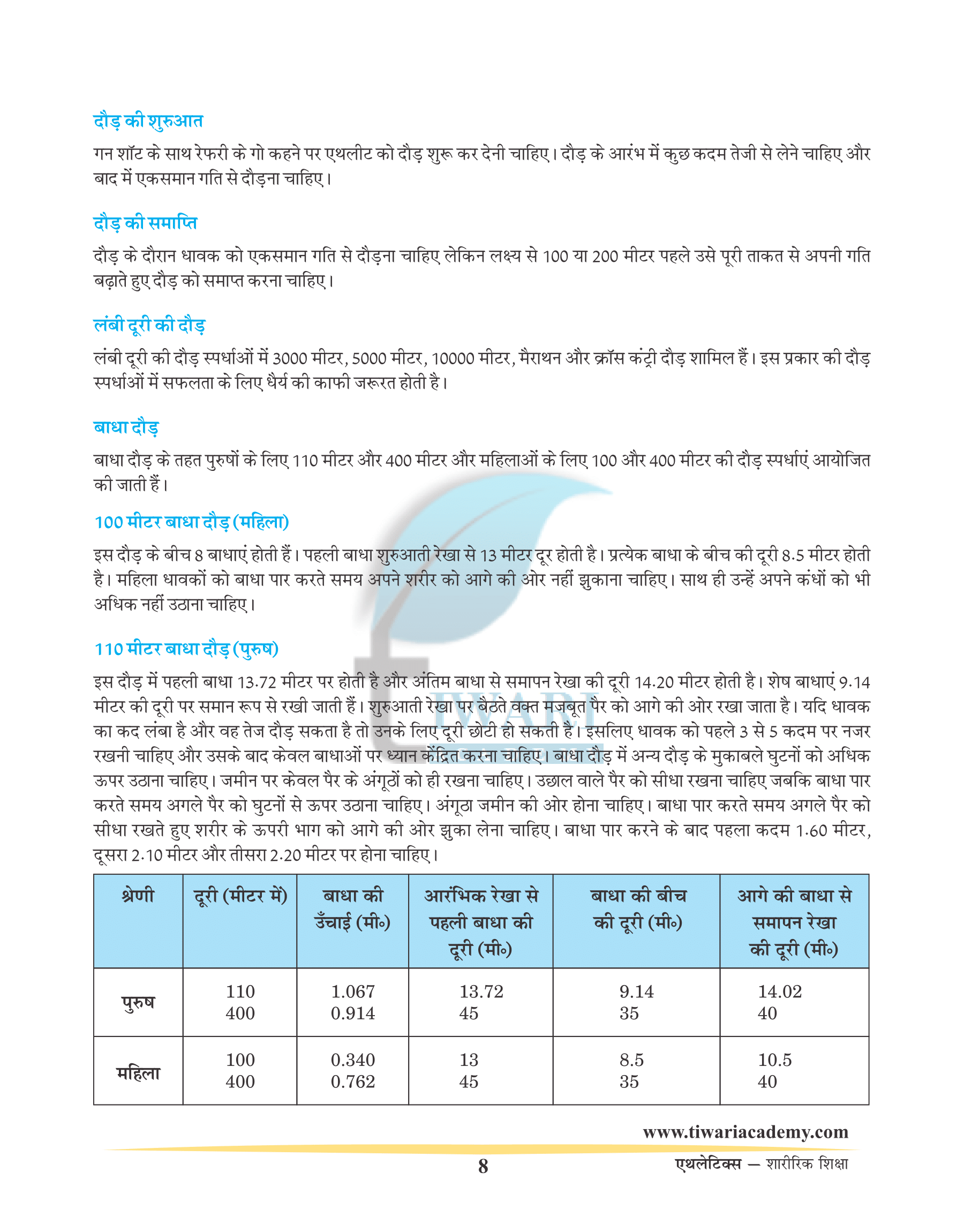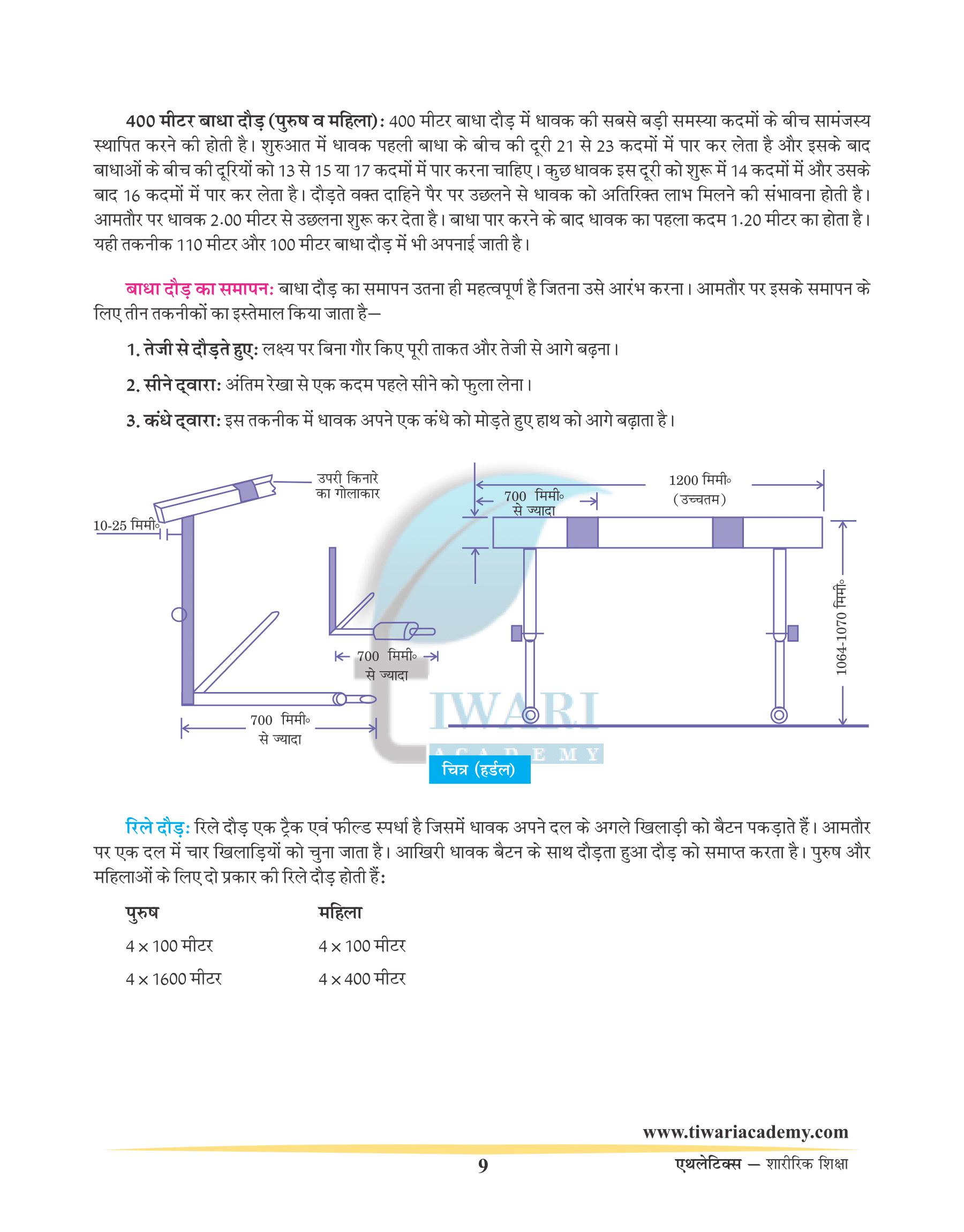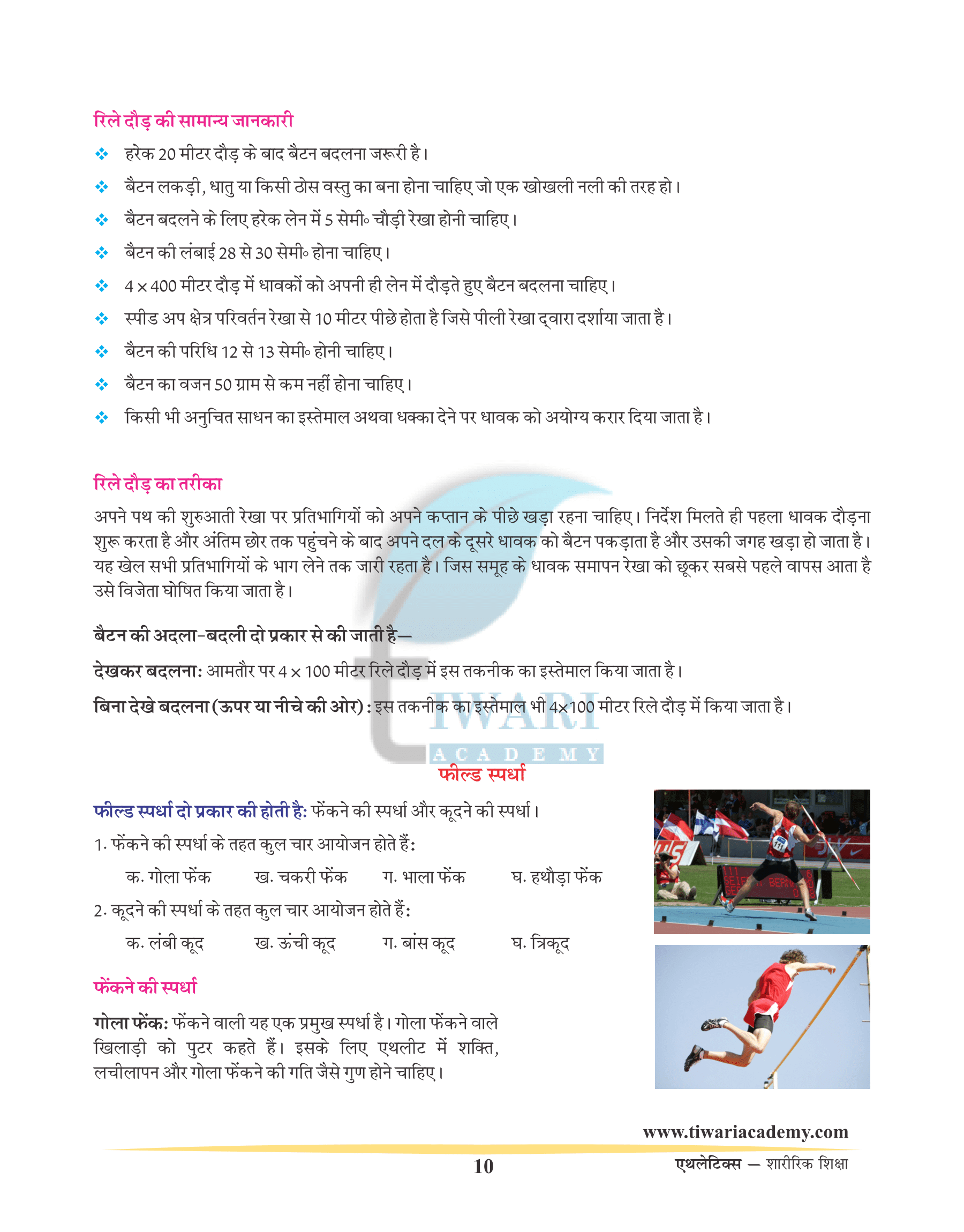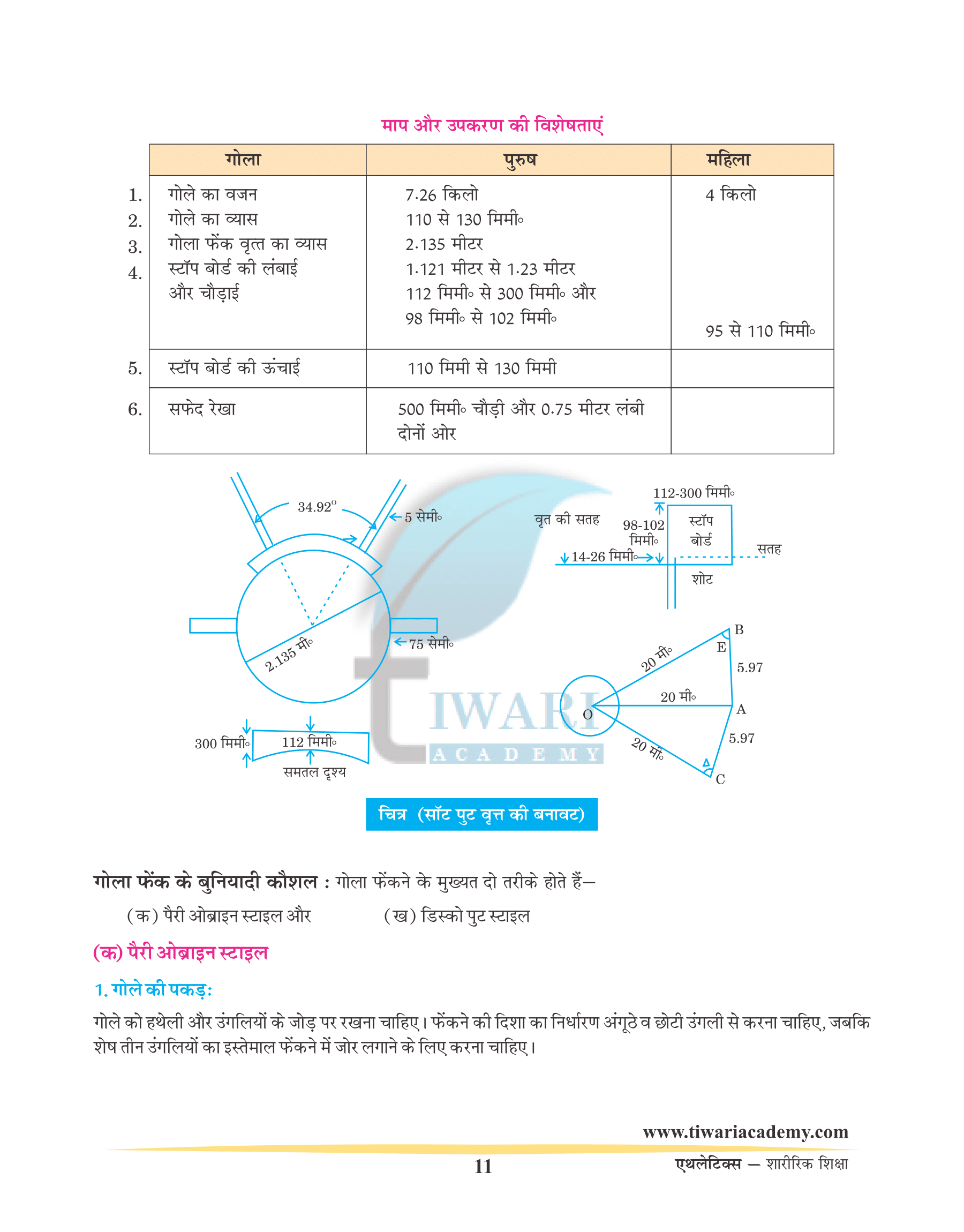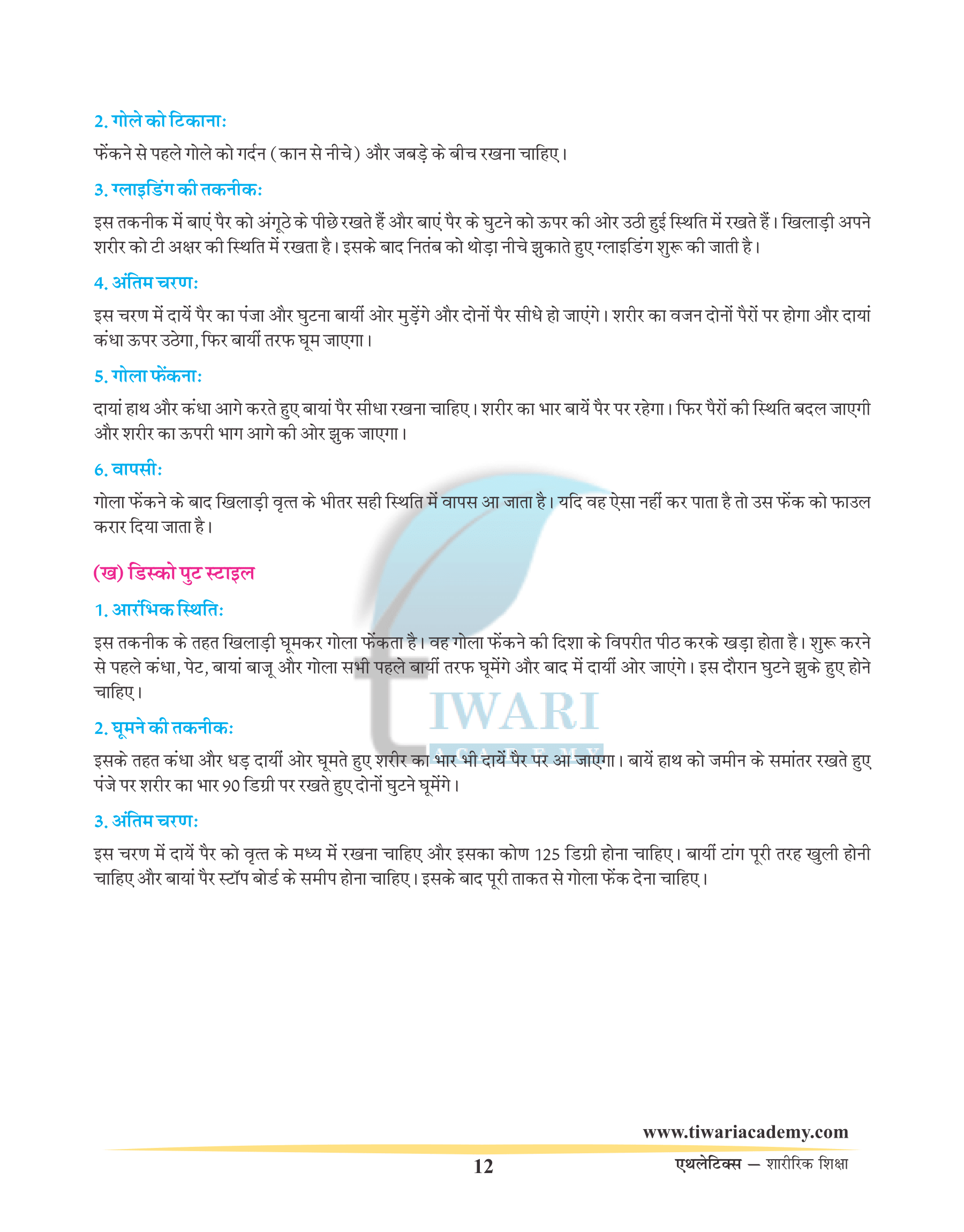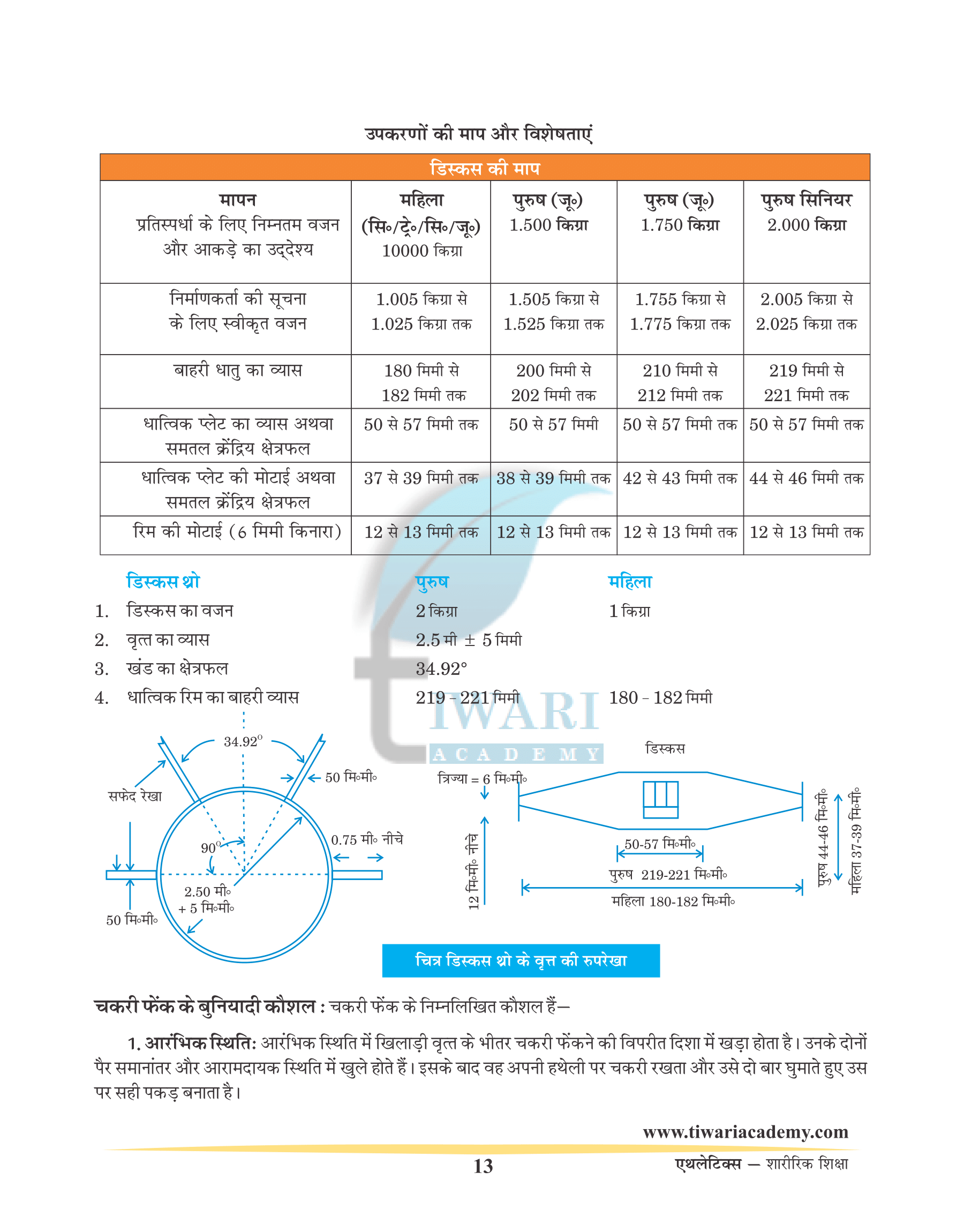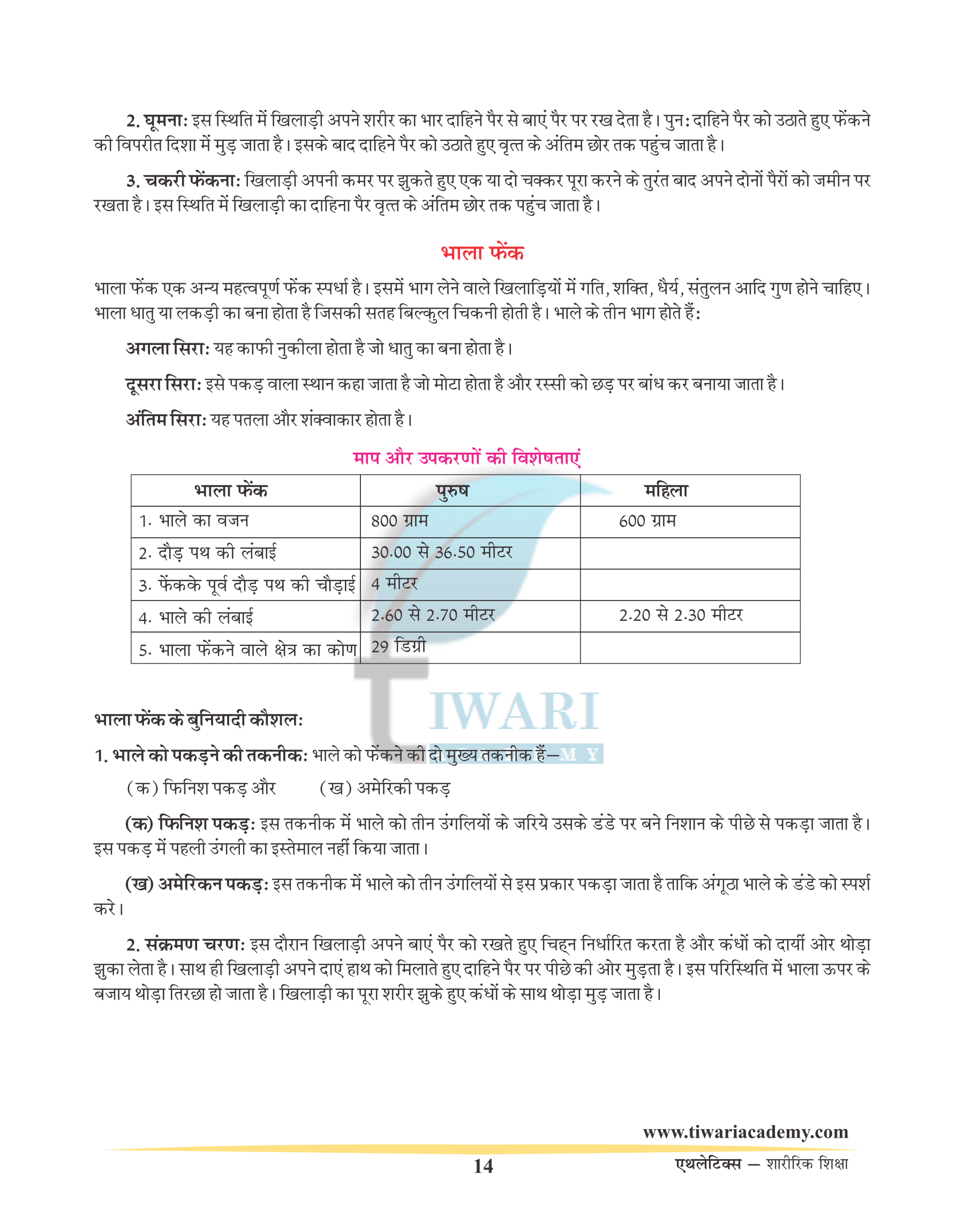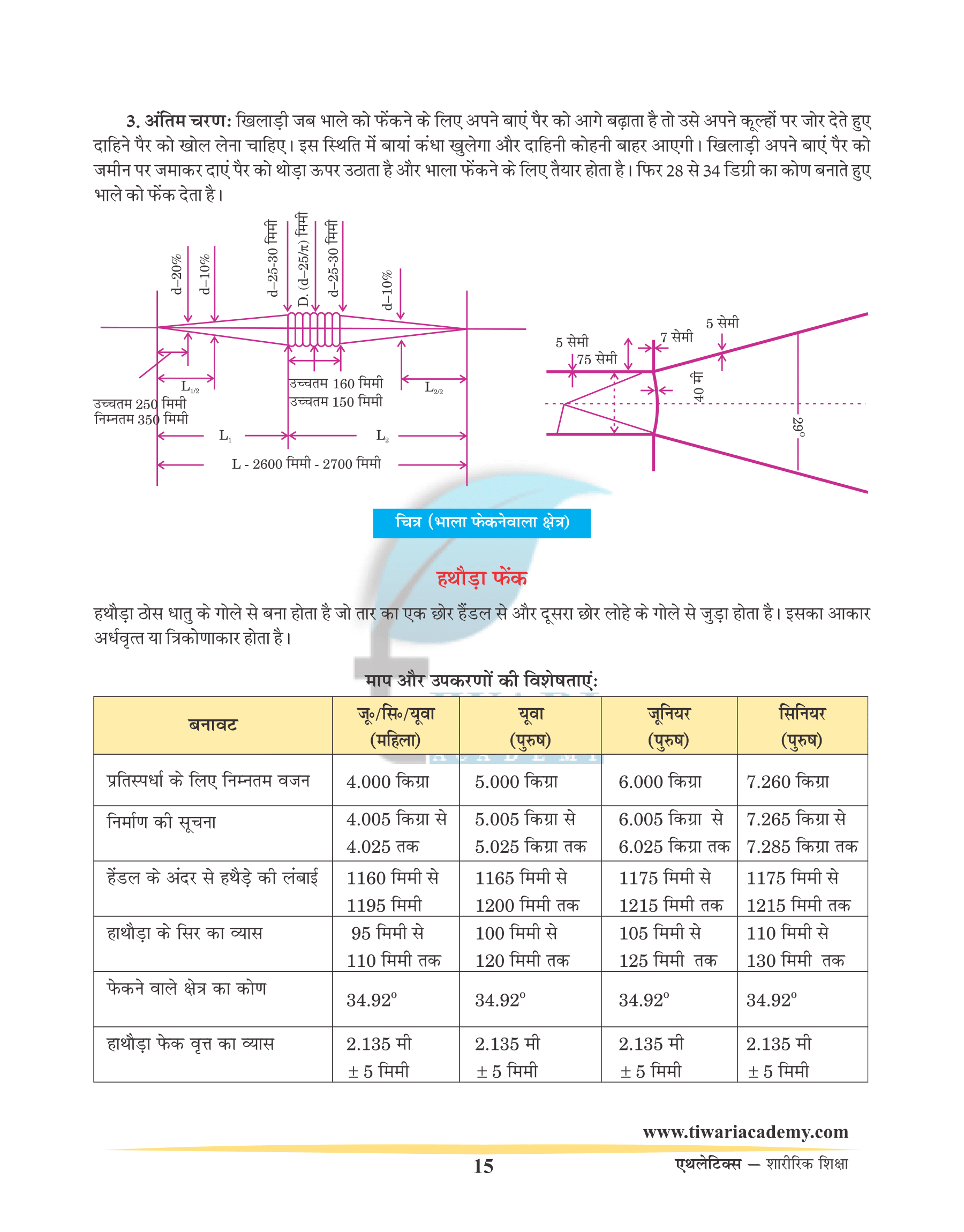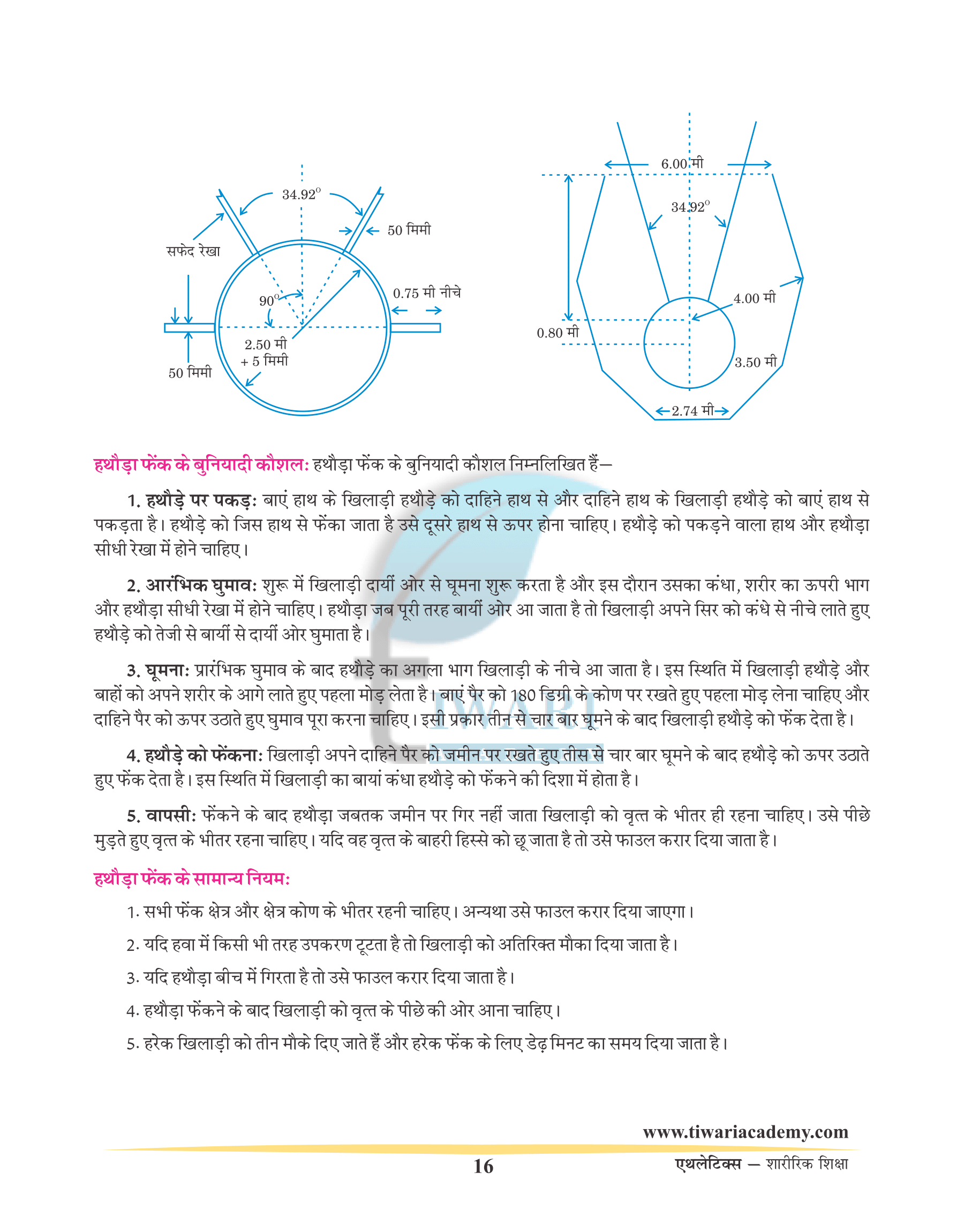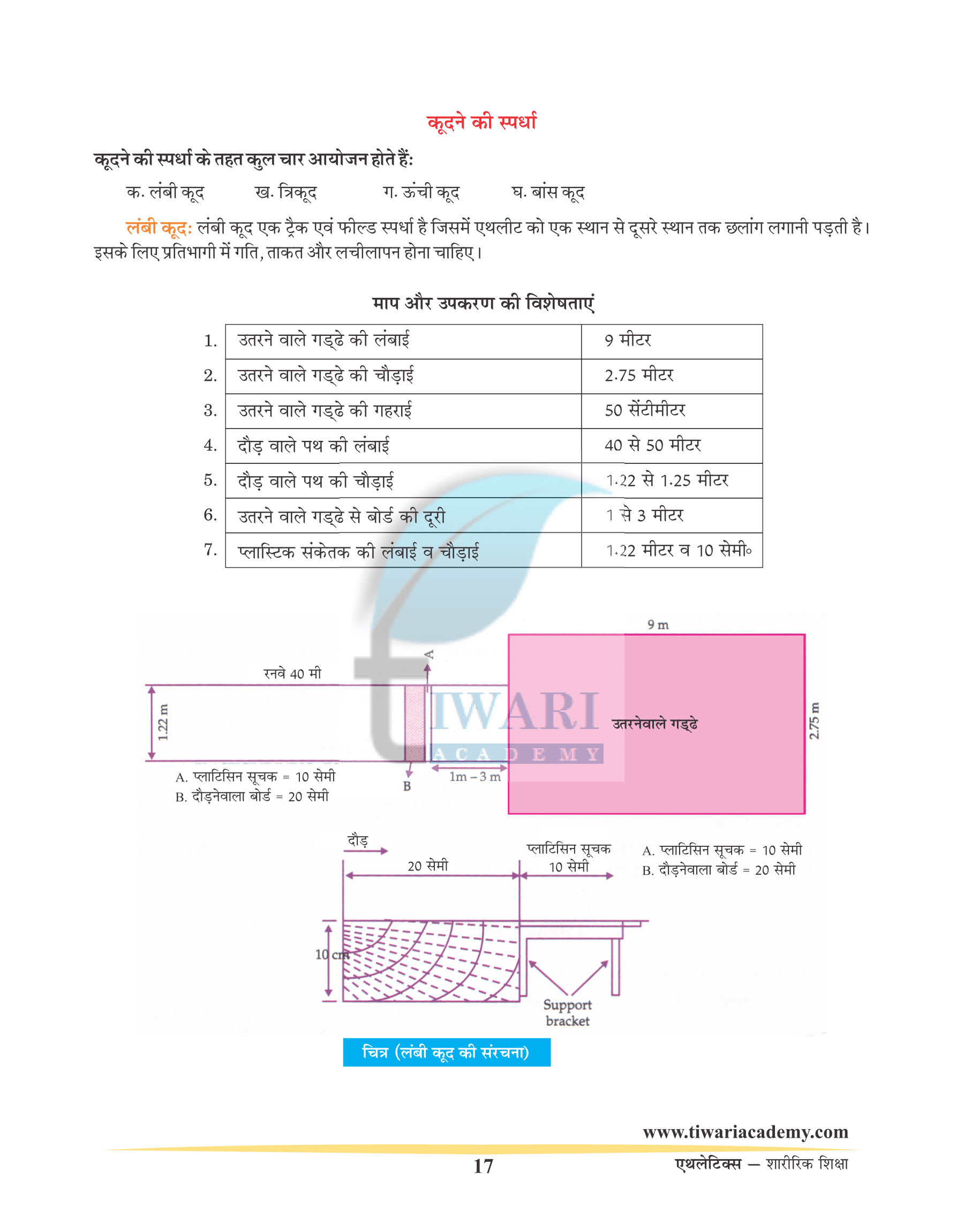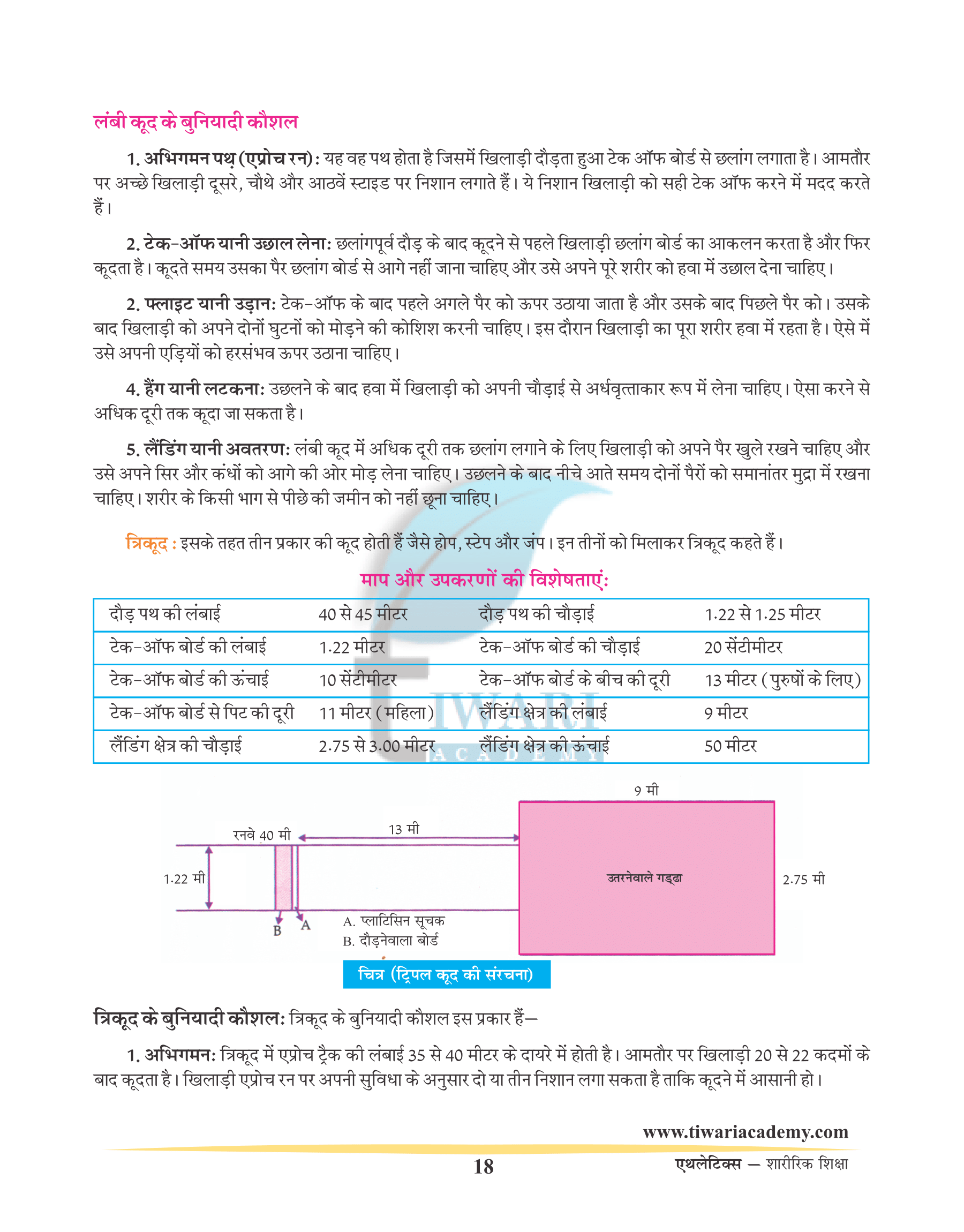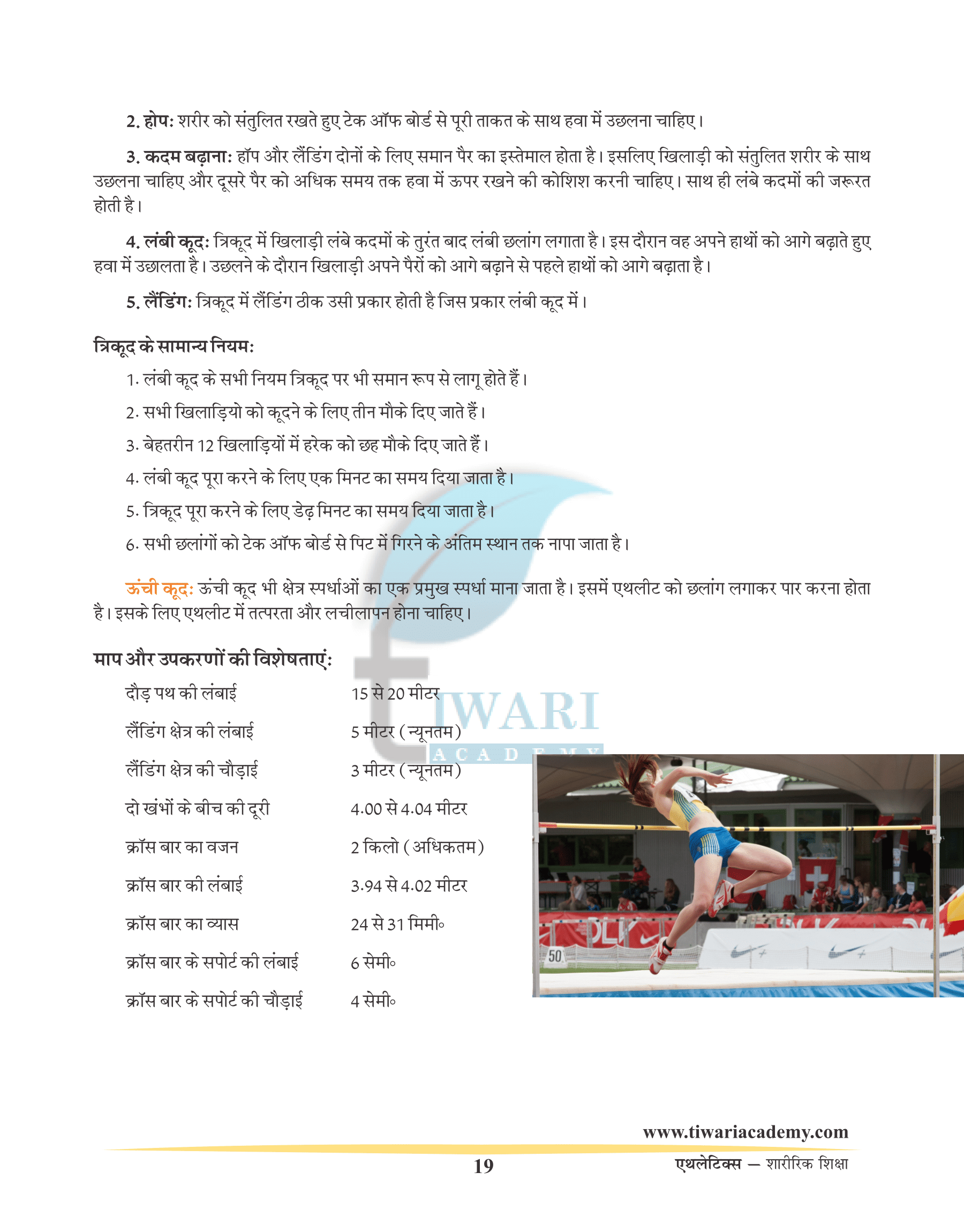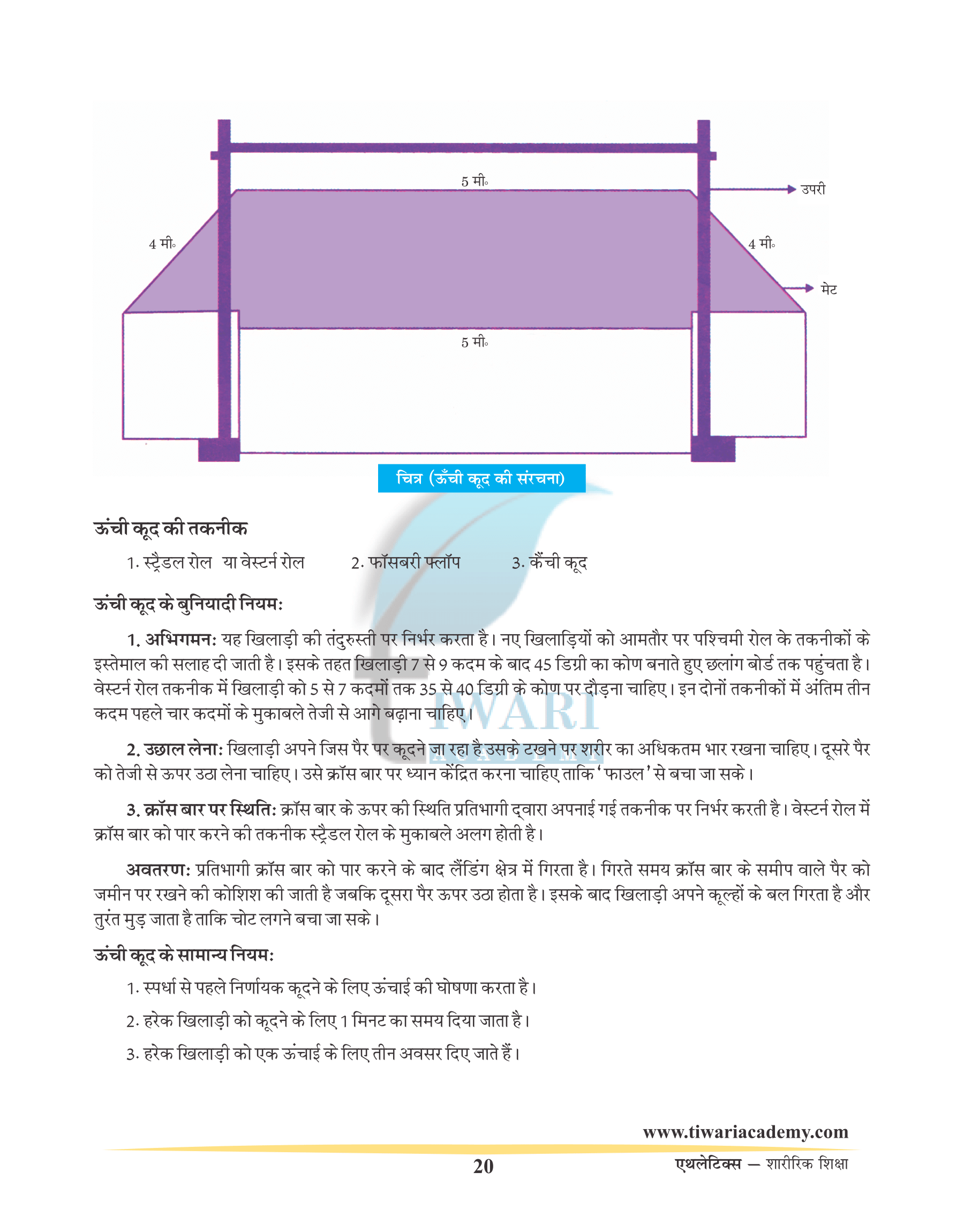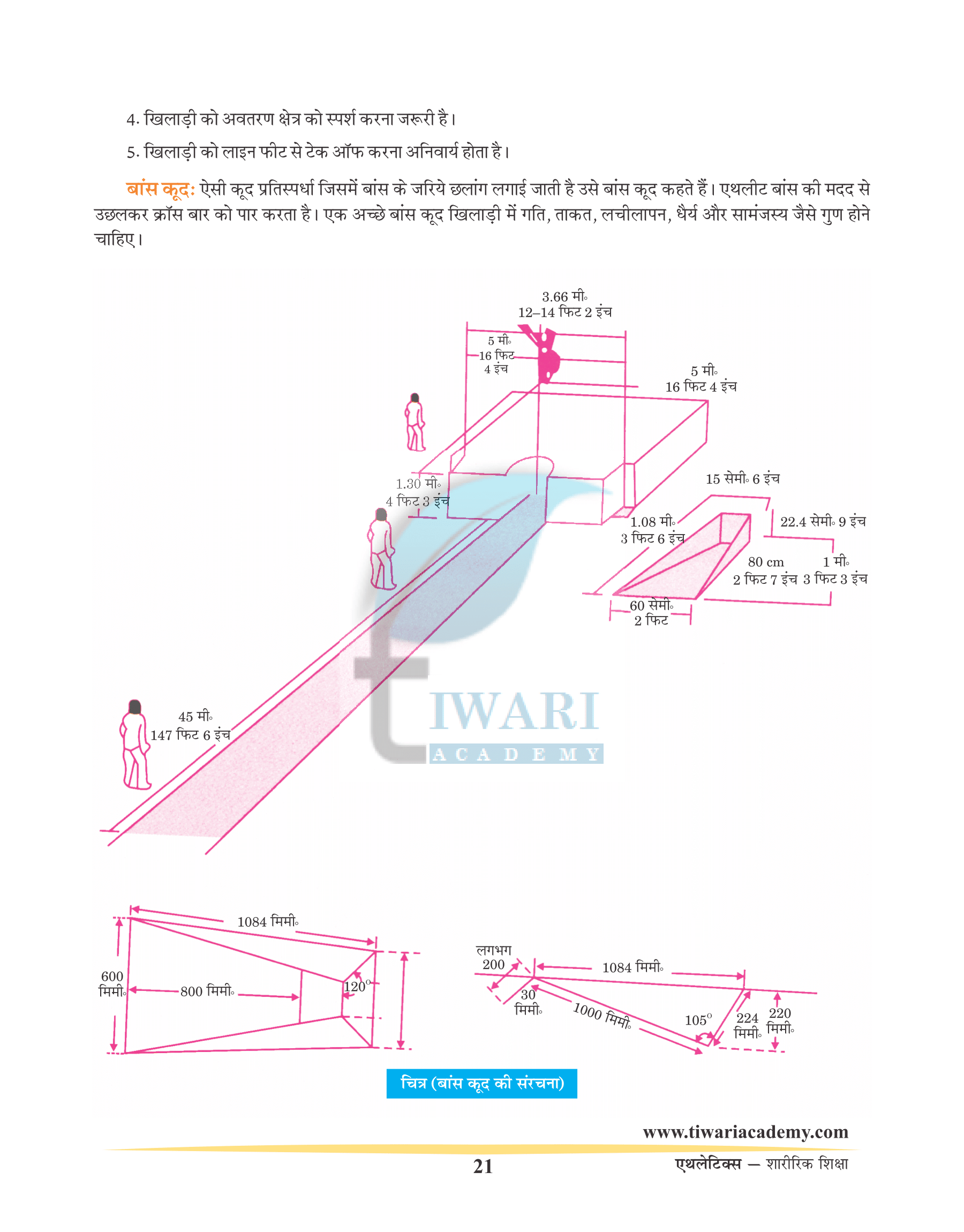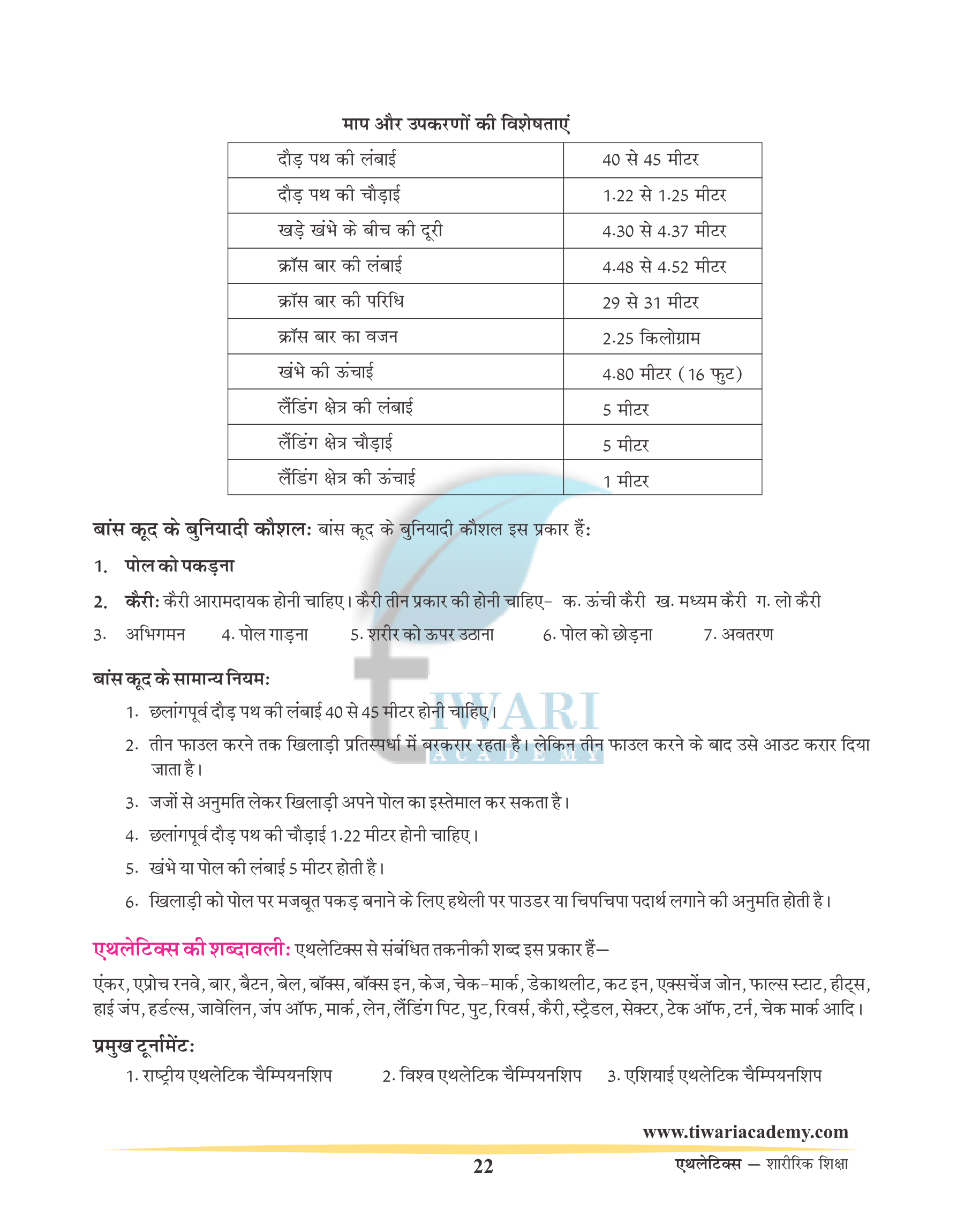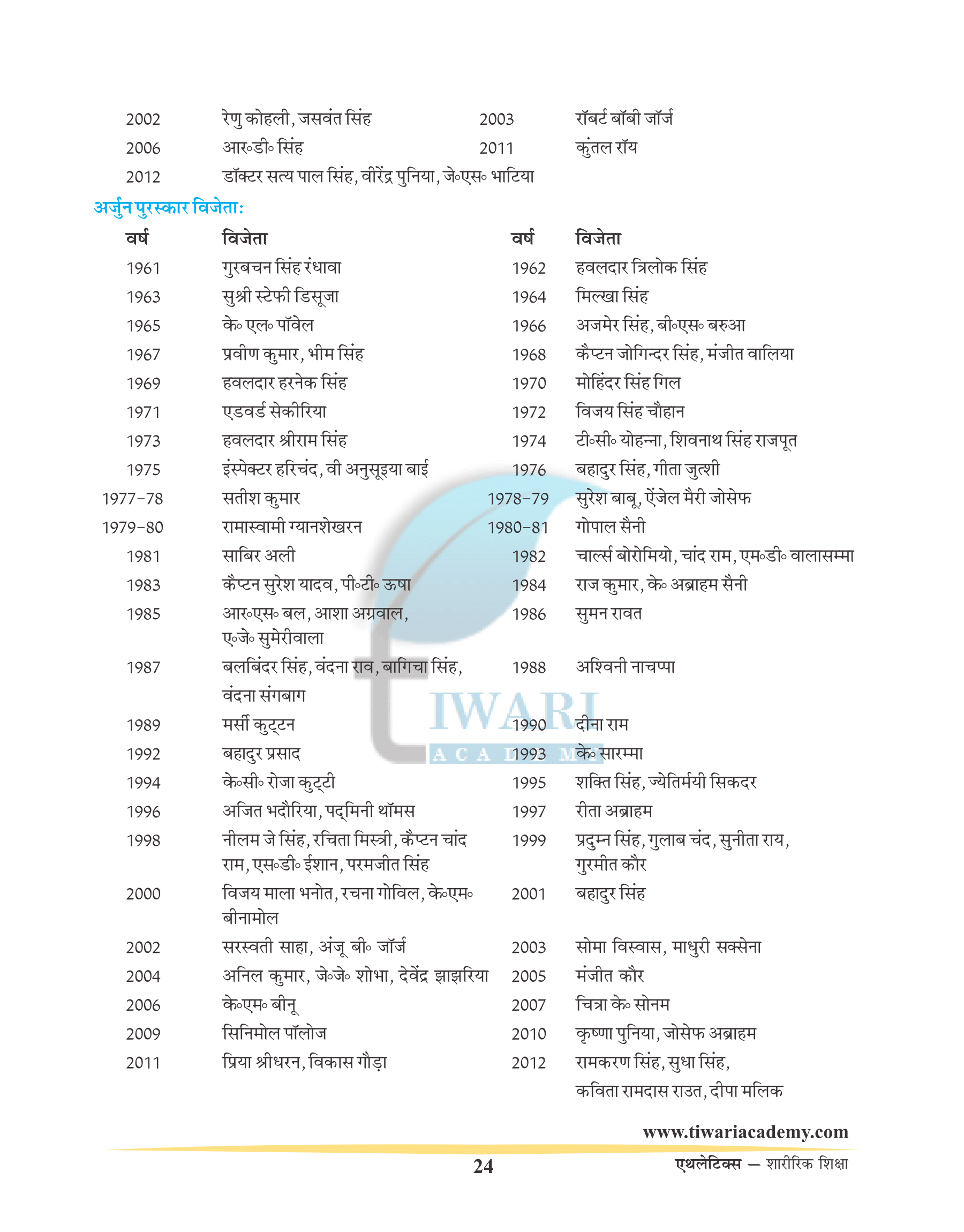The activities like running, jumping and throwing something, etc. are the normal and inborn activities of man. During the ancient periods, these activities were done by the primates for self-defense and food gathering. Over time, these activities were used for pastime and entertainment. Later the tournaments were organised on activities like running, jumping, and throwing. These activities in the modern world are known as Athletics. Race, long jump, high jump, Shotput, and hammer throw are examples of athletics.
How to prepare for Athletics Sports
History of Athletics
The term athletics receives its origin from the Roman word ‘Athlon’. It means contest or competition. The person who takes part in these activities is known as athlete. The ancient Olympic Games originated in 776 B.C. in ancient Greek. The Romans organised these games till 394 A.D. It was known as ‘Track and Field’. Soon after this, tournaments on athletics got popularity in France, England and Germany. But a French national Pierre- De-Coubertin revived these ancient contests throughout the world. In 1896 first modern Olympic Games were held in Athens, Greece where athletics events were introduced. International Amateur Athletic Federation was established in 1912. The first Asian Track and Field tournament was held at Manila, Philippines in 1973.
Types of Athletics
Athletic has three types of events:
- (i) Track: We compete against time or clock.
- (ii) Field: We compete against Height or Distance.
- (iii) Miscellaneous events: Decathlon, Pentathlon, (Men) Heptathlon, Decathlon (women).
1. Track Events
(a) Sprint races
The running events are called track events. These include 100 m, 200 m, 400 m, 110 m hurdle (Men) 100 m hurdle (Women), 400 m hurdle, 4 × 100 m relay and 4 × 400 m relay. These races are run with full power and speed. These are called sprint races.
(b) Middle distance races
The races of 800 m and 1500 m are called middle distance races. These races require patience, speed, stamina and power.
(c) Long distance races
The races of 3000 m, 5000 m, 10,000 m, Marathon race, Cross Country are called long distance races.
2. Field Events
The jumping and throwing events are called field events. They are of two types:
- (i) Jumping Events
- (ii) Throwing Events
| Jumping Events | Throwing Events |
|---|---|
| Long jump | Shot put |
| High jump | Discus throw |
| Pole vault | Javelin throw |
| Triple jump | Hammer throw |
3. Miscellaneous Events
Some other unique events which are known as Miscellaneous events are also organised in Athletics.
(i) Decathlon (Men)
The events are held over two consecutive days.
- (a) First day: 100 m long jump, shot put, high jump, 400 m.
- (b) Second day: 110 m hurdle, discus throw, pole vault, javelin throw and 1500 m.
(ii) Pentathlon (Men)
It consists of 200 m, 1500 m, long jump, javelin throw, discus throw.
(iii) Heptathlon (Women)
Following seven events are held over two consecutive days.
- (a) First day: 100 m hurdle, shot put, high jump, 200 m.
- (b) Second day: long jump, javelin throw, 800 m.
(iv)Decathlon (women)
There are ten events which are held over two consecutive days:
- (a) First day: 100 m, discus throw, pole vault, javelin throw, 400 m.
- (b) Second day: 100 m hurdle, long jump, shot put, high jump, 1500 m.
Latest General Rules
- The athlete will remain in his own lane throughout the race which are run in lanes.
- An athlete is not allowed to continue the race again who leaves the track with his own will.
- Every player is given 1½ minutes time for taking a jump.
- In high jump, the approach path of the approach run bears length of 15 m to 20 m.
- If landing is done using the leg opposite to that used for takeoff, it is considered as foul.
- The player should not come out from the circle until the shot touches the ground.
- Distance is measured in even as well as odd numbers in discus throw, hammer throw and javelin throw.
- The recommended angle for the landing area of the discus is 34.920 . The discus should fall in that very angle.
- If the javelin has touched the segment or the two lines drawn at its edge, it is considered as foul.
- The length of the hammer is recommended to be 117.5 cm to 121.5 cm.
- Baton is to be picked by the same player who dropped it during relay race.
Track Events Related measurements and specifications of Equipment:
Race
| Parameters | men | women |
|---|---|---|
| 1. Distance of race (m) | 110, 400 | 100, 400 |
| 2. Height of hurdle (m) | 1.067, 0.914 | 0.840, 0.762 |
| 3. Distance from start line to first hurdle (m) | 13.72, 45 | 13, 45 |
| 4. Distance between hurdles (m) | 9.14, 35 | 8.5, 35 |
| 5. Distance from last hurdle to finish line (m) | 14.02, 40 | 10.5, 40 |
400 m Hurdle Race (Men and Women)
In 400 m hurdle race, the hurdler faces the problem of coordinating his steps. From the starting line to the first hurdle, a hurdler usually completes this distance in 21 or 23 steps, completes the distance between hurdles in 13, 15 or 17 steps. Some hurdlers cover this distance in the beginning in 14 steps and later on they cover it in 16 steps. If the Jump is taken with the right foot it is much beneficial. Generally, the jump is taken from 2.00 m before the hurdle. After crossing the hurdle, the first step is usually placed 1.20 m forward from the hurdle. Rest of the technique remains same as in 100 m and 110 m hurdles.
Finishing of Hurdle
The finishing of hurdle race is equally important as the starting. Generally, three techniques are used in finishing.
(a) Run Through
The hurdler runs very fast without any attention on his real aim and crosses the finishing line as quickly as possible.
(b) Lunging
Lunging is done before one step of the finishing line. The hurdler tries to touch his torso to the finishing tape.
(c) Shoulder Shrug
In this technique, the hurdler bends his one shoulder forward along with hand. The other shoulder remains backward. By bending forword, the hurdler tries to touch the finishing tape at the earliest.
Relay Race
A relay race is a track and field event in which athletes run a pre-set distance carrying a baton before passing it onto the next runner. A relay team is a team of four sprinters.
There are two kinds of relay races for men and women:
Men 4 × 100 m Women 4 × 100 m
Women 4 × 400 m 4 × 400 m
Some general information regarding relay race is given below.
- Baton is exchanged after every 20 metre distance.
- Baton is made up of wood, metal or any rigid substance in rounded and hollow tube shaped.
- 5 cm thick side line is drawn in each and every lane to show the baton exchange area.
- Length of baton should be 28-30cm. Its area is marked with red line on both the sides.
- Runners exchange the baton running in their lane in 4 × 400 m.
- Speed up zone lies 10 m before the starting line in exchange area. It is marked with a yellow line.
- Circumference of batons should be around 12-13 cm.
- Weight of baton should not be less than 50 g.
- Use of any unfair mean, pull or push can disqualify the runner.
Method of Relay Races
At the starting line of their lanes, the participants should stand their captain, the first athlete starts running as soon as permission is granted and goes to the end line then he came back and touches the next athlete of his team and stands aback. The race continues until all the athletes have taken part. The group whose athlete comes back first after touching the finishing line is declared as winner.
Baton is exchanged in two ways:
(i) Visual Method: It is used in 4 × 400 m relay.
(ii) Non visual Method: (upward or downward) It is used in 4 × 400 m relay.
Throwing Events
Shot-put
Shot-put is main event of throwing events. The player who throws the shot is called a putter. The athlete should have qualities like power, flexibility and speed to throw the shot.
Fundamental Skills of Discus throw
There are following skills in throwing the discus:
(a) Initial Position
In initial position, the discus thrower stands in the circle facing back to the throwing direction. His both feet should be opened and in a straight line. He takes one or two swings. Then he moves towards the left by bending his knees.
(b) Turning
While taking a turn, his body weight should shift from right foot to left foot. Then right foot comes in the centre of the circle simultaneously, the left foot comes toward the throwing direction.
(c) Final Phase
In this phase, the thrower’s feet rest on the surface of the circle. The left leg remains straight while the right leg remains in bending position. The discus is now thrown with full force.
Javelin Throw
Javelin Throw is another major, throwing event. An athlete should have speed, power, patience, balance etc. for Javelin throw. It is very smooth surfaced arrow made up of metal or wood.
Hammer Throw
Hammer is made up of a solid metallic sphere connected with single piece of steel wire having a metallic handle attached at the end of wire. The grip is semicircular or triangular in shape. Hammer Throw is another major, throwing event
General Rules of Hammer Throw
(1) Throws should be within the sector angle and within the sector. Otherwise it will be a foul.
(2) If any equipment breaks during the throw, the thrower will get another chance to throw.
(3) Qualifying marks are fixed if the number of participants is more than twenty-five.
(4) Throwers are allowed to use powder or any sticky material to grip the equipment.
(5) Every thrower is to be given three chances. After that best of twelve throwers are given 6
chances each to throw again.
Jumping Events
Jumping events consist of four events.
1. Long Jump
2. Triple Jump
3. High Jump
4. Pole Vault
Long Jump
Long jump (historically called the broad jump) is a track and field event in which athletes combine speed, strength and agility in an attempt to leap as far as possible from a takeoff point.
General rules of triple jump and long jump
- All rules of Long Jump equally apply in Triple Jump.
- All the jumpers will be given three chances to Jump.
- Best of twelve jumpers are given six chances each.
- One minute is given to complete the long jump.
- One and half minute is given to complete the triple jump.
- Jumps are measured as the distance between take off board and the last point of contact with sand in landing pit.
High Jump
High Jump is also considered as one of the major events of field events. In it an athlete crosses
a jump. An athlete should have activeness, and flexibility.
Measurements and specification of equipment:
| Event | Measurement |
|---|---|
| Length of run way | 15-20 m |
| Length of landing area | 5 m (min) |
| Width of landing area | 3 m (min) |
| Distance between upright | 4-4. 04 m |
| Weight of cross bar | 2 kg (max) |
| Length of cross bar | 3.98 – 4.02 m |
| Diameter of cross bar | 29-31mm |
| Length of supports for crossbar | 6 cm |
| Width of supports for crossbar | 4 cm |
General Rules
1. Before the competition the judges announce the height to the competitors.
2. One-minute time is given to each jumper to complete the jump.
3. Each and every jumper is given three chances for one height.
4. Competitors must land within the landing area.
5. The competitors must take off from line foot.
Pole Vault
The only jumping event, in which an apparatus known as pole is used is called pole vault. The
cross bar is crossed with the help of a pole. This event is very difficult. A good pole vaulter should have speed, power, flexibility, patience and coordination.
Measurements and specification of equipment:
| Measurement type | specification |
|---|---|
| Length | 40-45 m |
| Width | 1.22-1.25 m |
| Distance between uprights | 4.30-4.37 m |
| Length of cross-bar | 4.48-4.52 m |
| Diameter of cross-bar | 29-31mm |
| Weight of cross bar | 2.25 kg |
| Length and width of landing | 5×5 m |
| Height of landing area | 1 m |
General Rules
1. The length of approach path (track) for approach run is kept between 40 m to 45 m.
2. The player remains in the contest till he makes three fouls. Then he is declared ‘out’.
3. No jump is counted if:
(a) cross bar falls down from support
(b) jumper touches the landing area stop board or ground by the pole before crossing the
crossbar.
4. Jumper is given another chance if the pole is broken.
5. No one is allowed to touch the pole unless it is falling away from the bar or uprights.
6. The bar is raised by at least 5 cm after each round.
7. The competitor is allowed to apply powder or other sticky material on palm and pole for proper grip.
| Important – Tournaments | Venues |
|---|---|
| National Athletic Championship | Jawaharlal Nehru Stadium, Delhi |
| Asian Athletic Championship | Netaji Subhash National Institute, Patiala |
| World Athletic Championship | L.N.C.P.E. Stadium, Gwalior |
| Asian Games | University Stadium, Thiruvananthapuram |
| Olympic Games | Nahar Singh Stadium, Faridabad |
| National School Games | Ch. Charan Singh Stadium, Hissar |
Famous Personalities and Awards
P.T. Usha, Milkha Singh, Anju B. George, Ajmer Singh, Bahadur Singh, Shakti Singh, Ashwani
Nachapa, Asha Aggrawal.
International
Sargae Bubka, Jessi Ovens, Kari Leius, Abibi Mikila
1. Rajiv Gandhi Khel Ratn Award
| Award Year | Personality |
|---|---|
| 1998 | Jyotirmoyi Sikdar |
| 2002 | K.M. Beenamol |
| 2003 | Anju Bobby George |
2. Dhyan Chand Award
| Awards Year | Personality |
|---|---|
| 2003 | Brig. (Retd.) Labh Singh, Mehendale Digamber Parshuram |
| 2006 | Uday K. Parbhu |
| 2007 | Hakam Singh |
| 2008 | Ishar Singh Deol |
| 2009 | Satish Pillay |
3. Dronacharya Award
| Awards Year | Personality |
|---|---|
| 2002 | Jaswant Singh, Renu Kohli |
| 2003 | Robert Bobby George |
| 2006 | R.D. Singh |
| 2009 | A.K. Kutty |
| 2011 | Kuntal Kumar Roy |
4. Arjun Award
| Award Year | Personality |
|---|---|
| 2000 | Vijay Mala Bhanot, Rachna Govil, K.M. Beenamol |
| 2002 | Saraswait Saha, Anju Bobby George |
| 2003 | Soma Biswas, Madhuri Saxena |
| 2004 | Anil Kumar, Devendra, J.J. Sobha |
| 2005 | Manjit Kaur |
| 2006 | K.M. Binu |
| 2007 | Chitra K. Soman |
| 2008 | Sinimol Paulose |
| 2009 | Joseph Abraham and Krishna Punia |
| 2011 | Preeja Sreedharan and Vikas Gowda |
